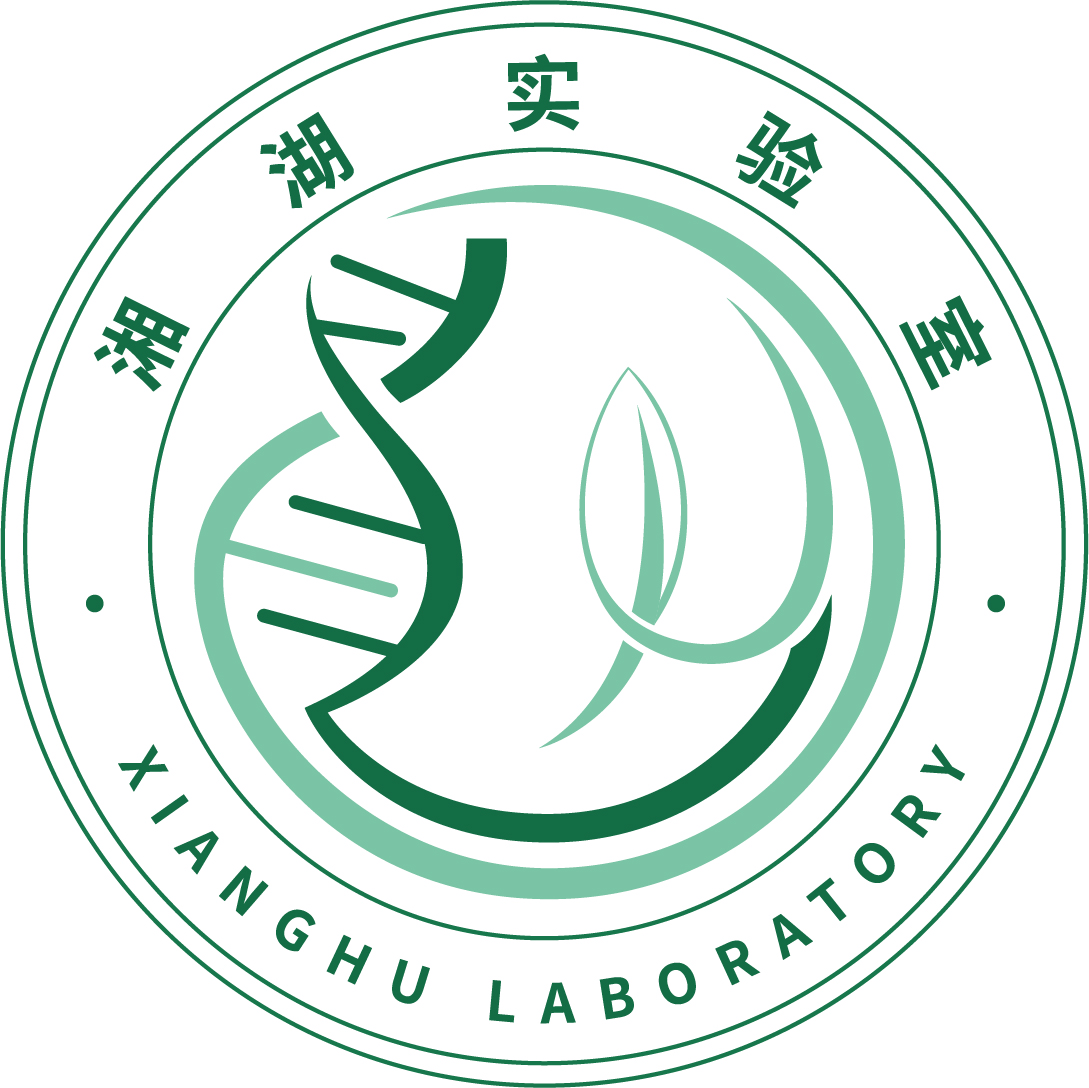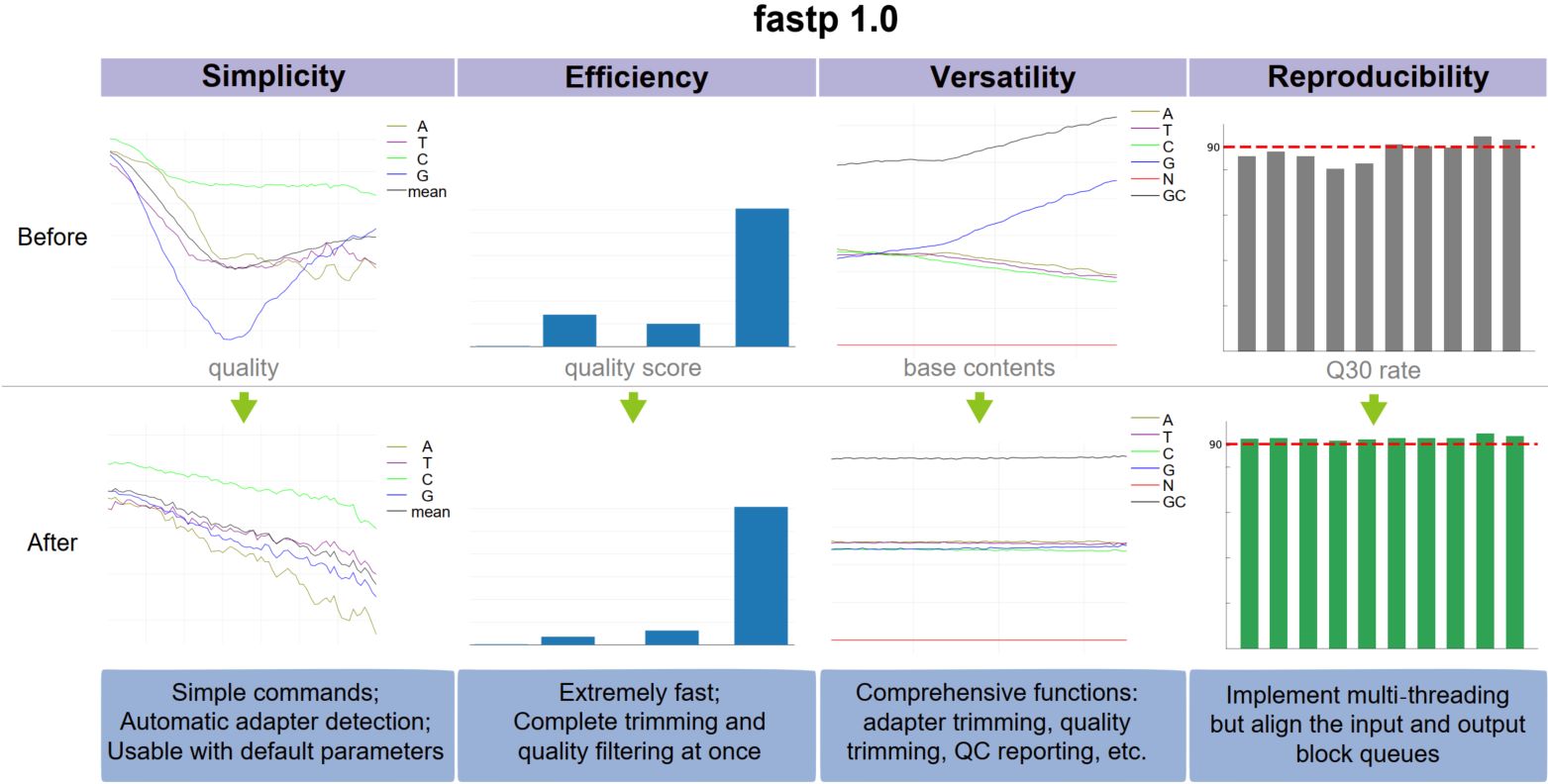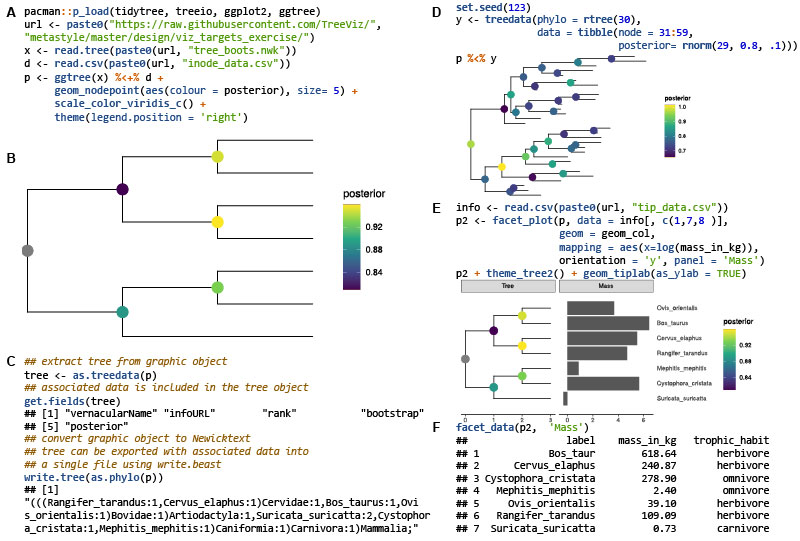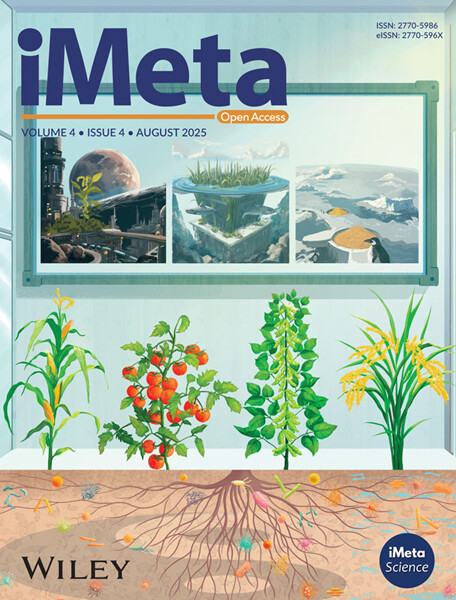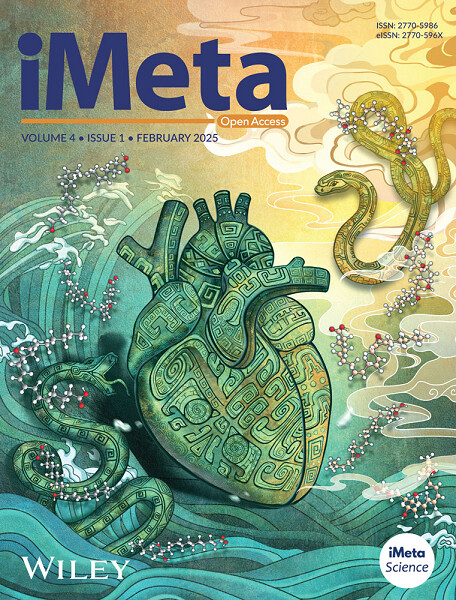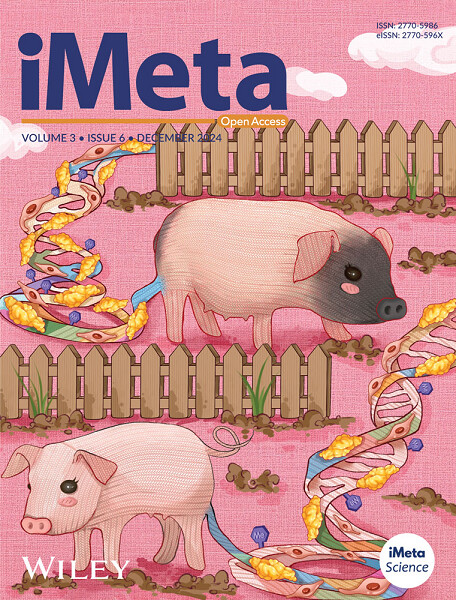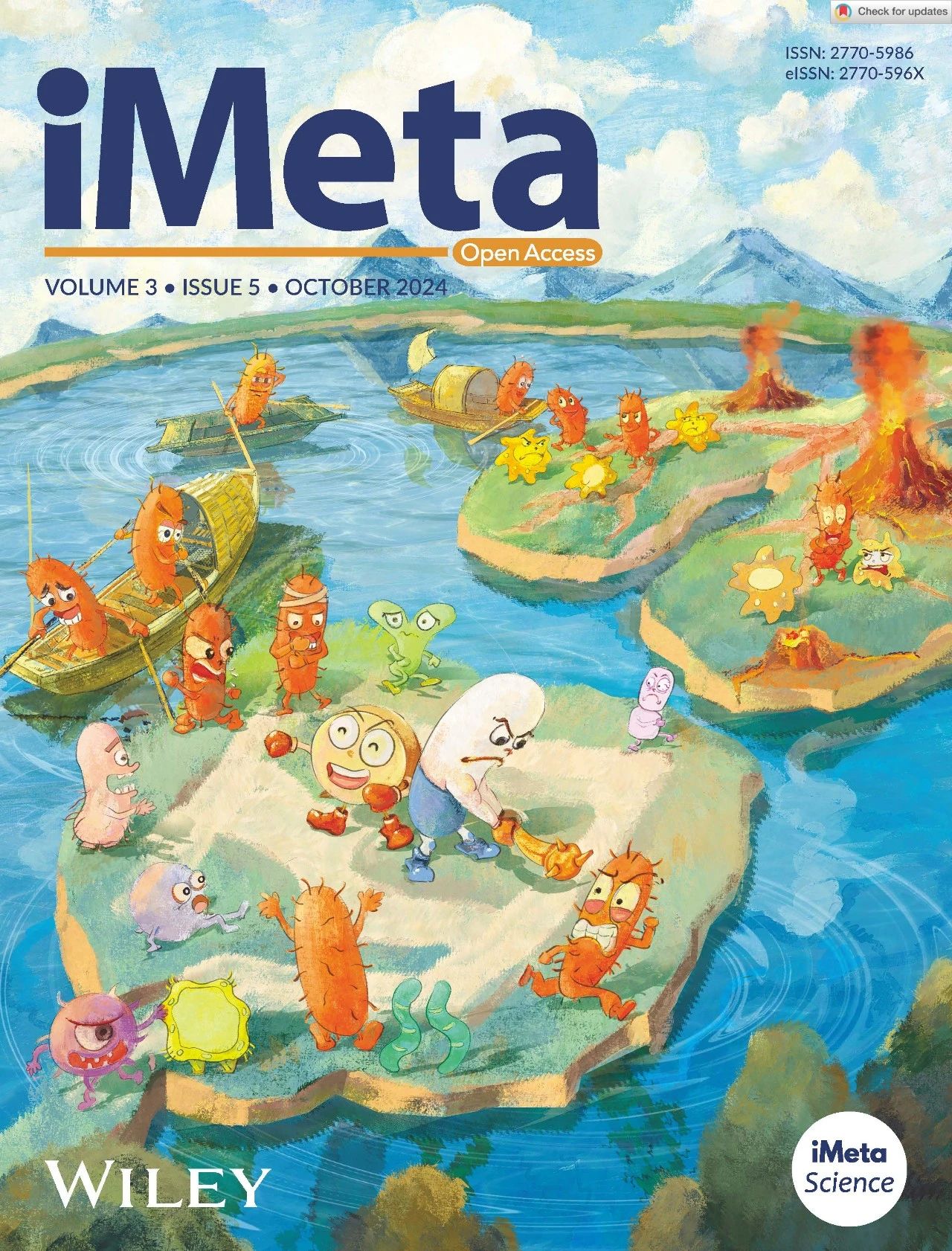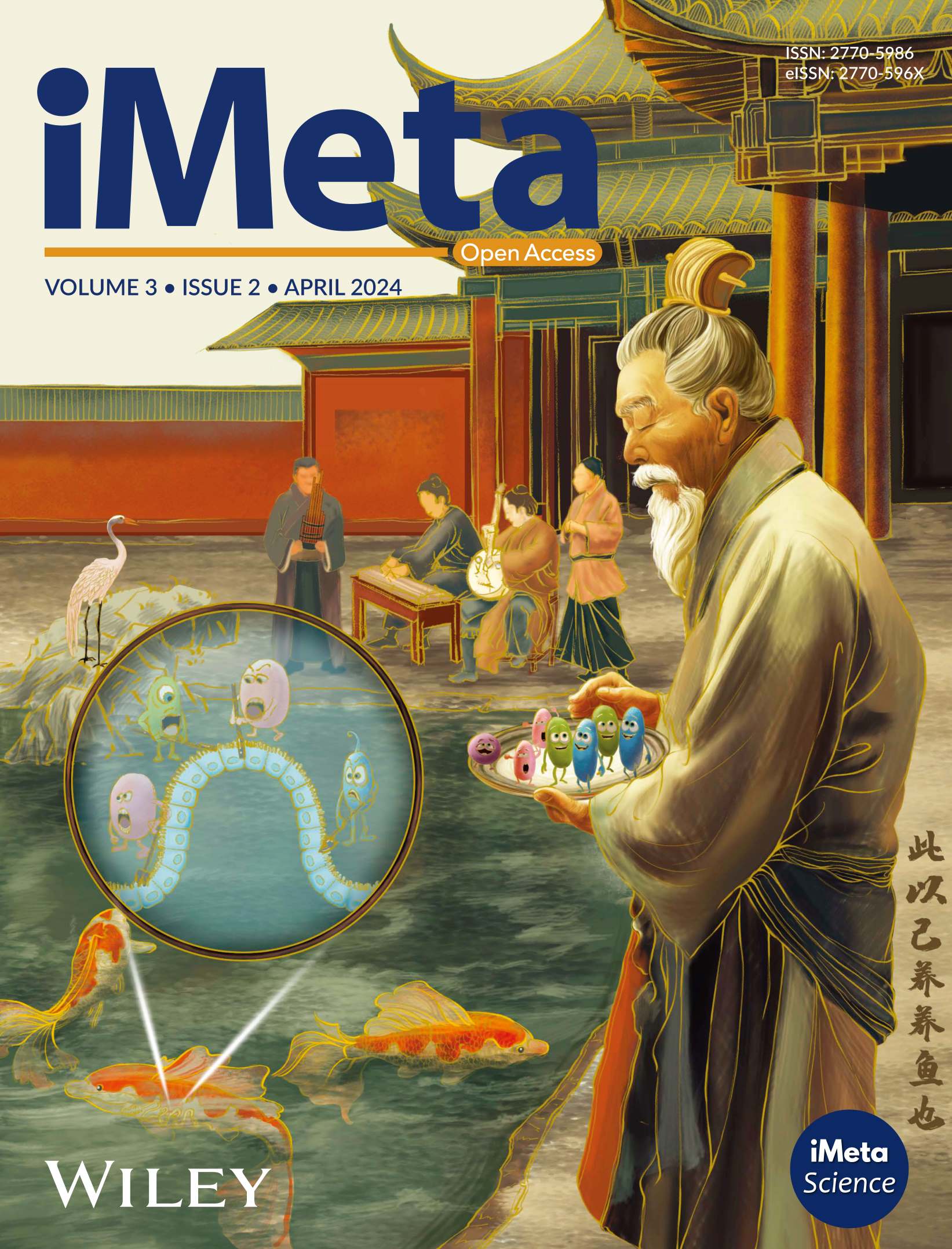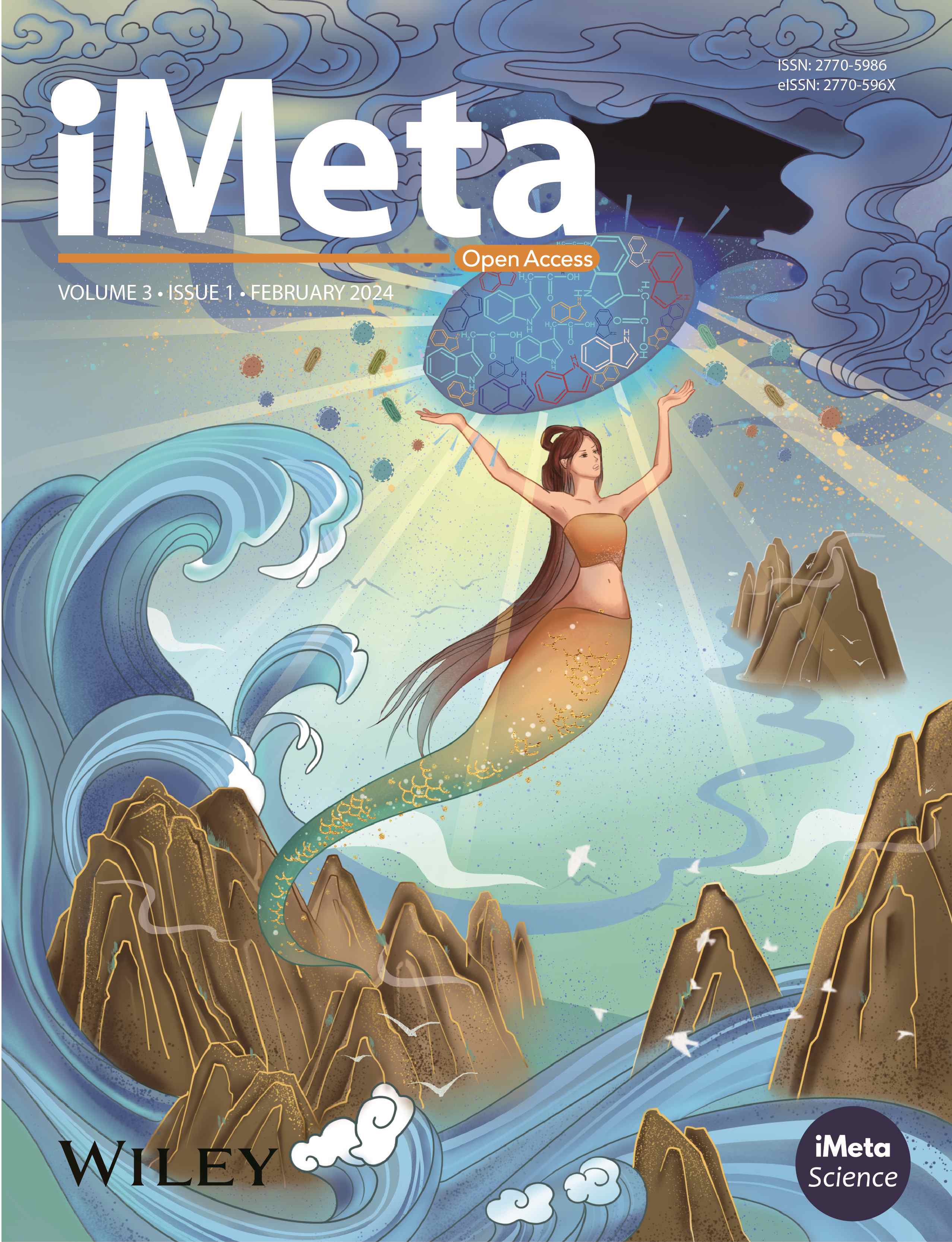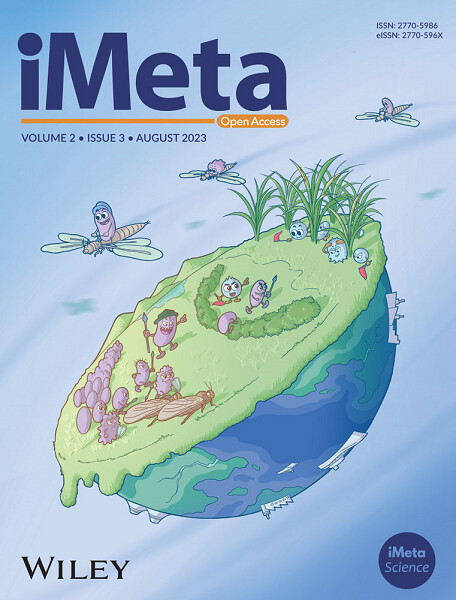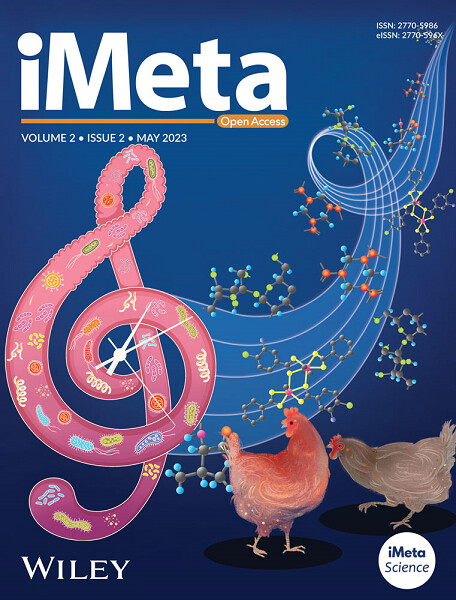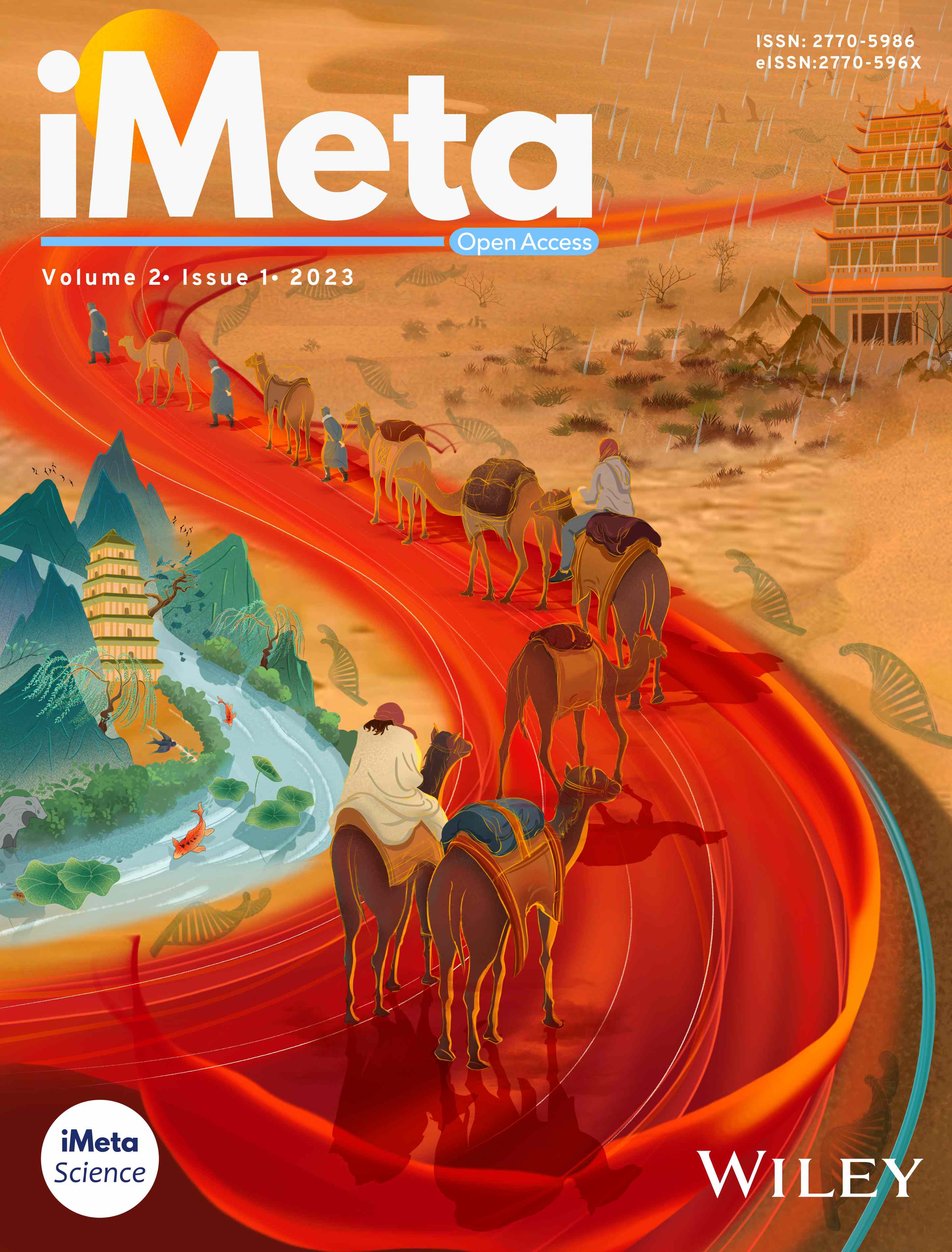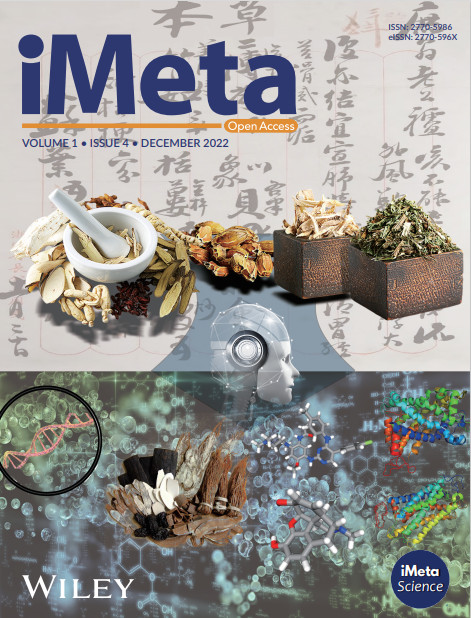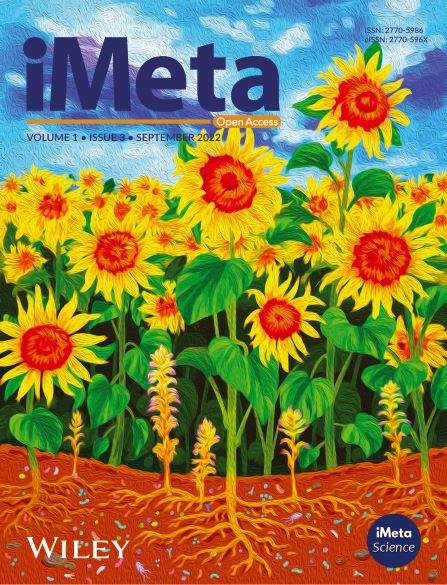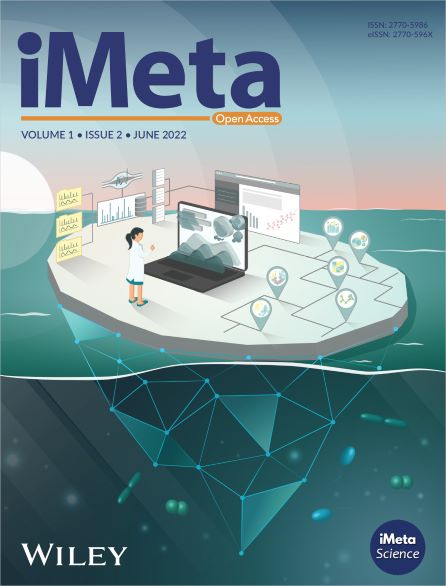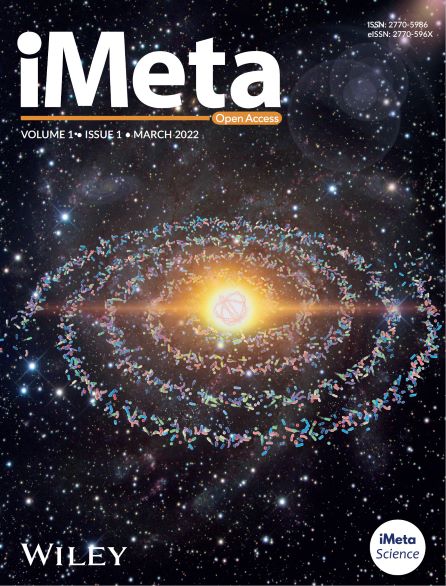













A vast stem-progenitor cell pool, richly vascular system, and hybrid ossification drive the daily centimeter-scale elongation of bony antlers
- 08 December 2025
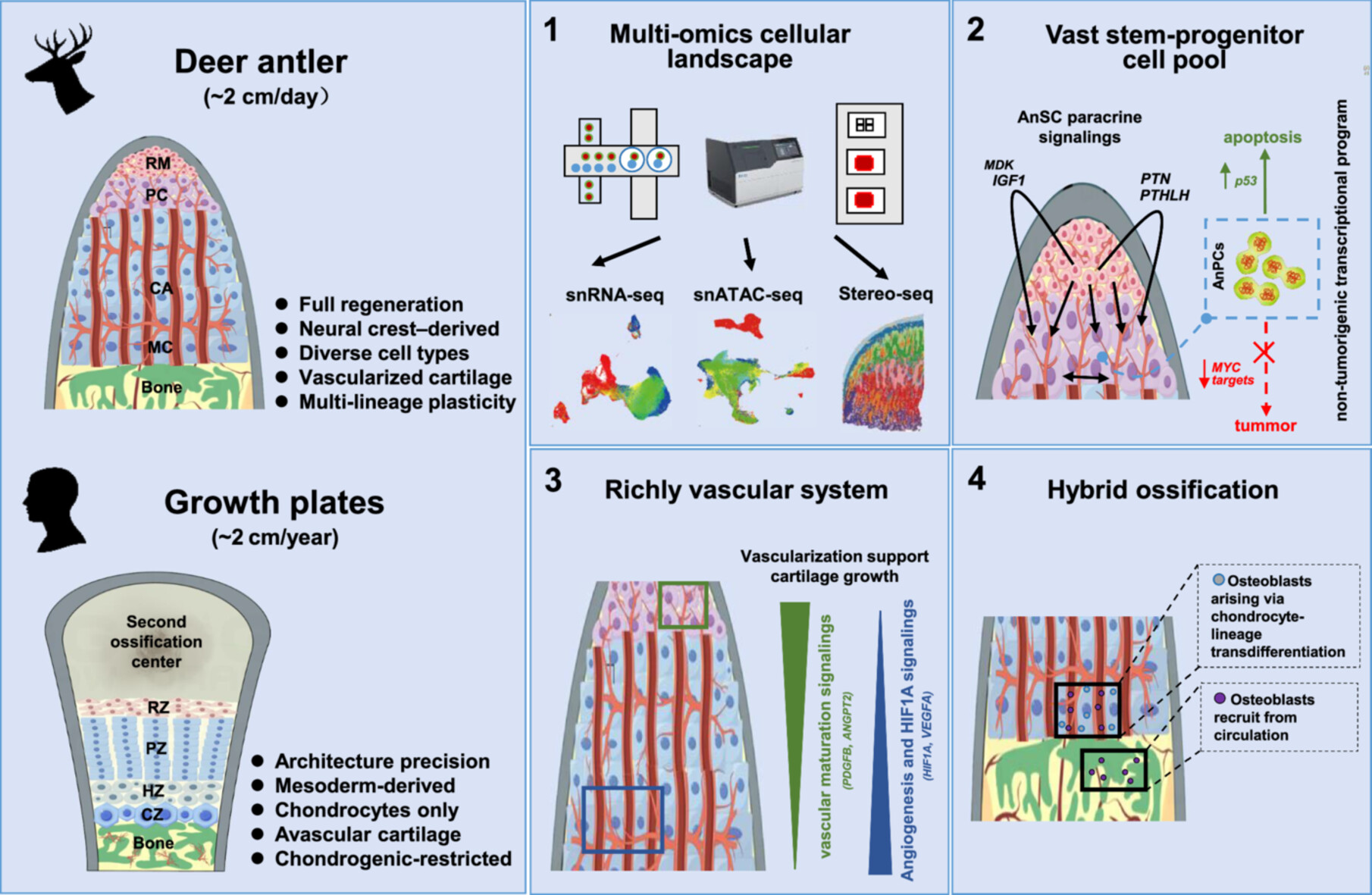
Bone growth and regeneration remain major clinical challenges. Deer antlers, the fastest-growing mammalian bone, regenerate via endochondral ossification and elongate up to 2 cm per day, far surpassing the ~2 cm annual growth of human growth plates. Here, we systematically mapped the cellular landscape of the antler growth center (AGC) using single-nucleus RNA sequencing, chromatin accessibility profiling, and spatial transcriptomics. The AGC harbors a large stem-progenitor pool that drives rapid elongation through vigorous proliferation supported by paracrine signaling. These proliferative cells exhibit a transcriptional program with intrinsically low tumorigenic potential, associated with apoptotic regulation. The AGC also establishes a vascularized niche that supports robust angiogenesis, sustains accelerated cartilage growth, and enables efficient recruitment of osteogenic cells. Notably, antlers employ a hybrid ossification strategy, combining endochondral ossification with direct hypertrophic chondrocyte-to-osteoblast transdifferentiation, likely via PHEX⁺ intermediates. Collectively, these findings refine fundamental concepts of endochondral ossification and offer insights for regenerative bone therapies.
Single-cell spatial transcriptomics reveals potential molecular mechanisms of Abelmoschus manihot (L.) medic in treating diabetic kidney disease
- 08 December 2025

A clinical study reported that Abelmoschus manihot (L.) Medic (A. manihot), in the form of Huangkui capsule (HKC), combined with irbesartan (IRB) is an effective therapy for patients with diabetic kidney disease (DKD). The bioactive components of HKC are total flavones extracted from A. manihot (TFA). To explore the pharmaceutical molecular mechanisms underlying the efficacy of A. manihot in the treatment of DKD, we have combined SpaTial Enhanced REsolution Omics-sequencing (at 0.25 μm resolution) with single-cell full-length RNA sequencing. We employed the db/db mouse model of type 2 diabetes and DKD. These experimental methods generated the first single-cell resolution pharmacopathological spatial atlas in kidneys of db/db mice that were treated with TFA or IRB. TFA exhibited therapeutic effects on DKD comparable to those of TFA combined with IRB. Following genome-wide gene screening and molecular docking simulation, we have identified the key renal receptors (Itga3, Itga5, Tgfbr1, etc.) and regulators (Jun, Junb, Stat1, etc.) underlying the therapeutic action of TFA in DKD. This study provides novel insights into the pharmaceutical mechanisms of A. manihot in the treatment of DKD.
Genome-wide CRISPR screen reveals an uncharacterized spliceosome regulator as new candidate immunotherapy target
- 28 November 2025
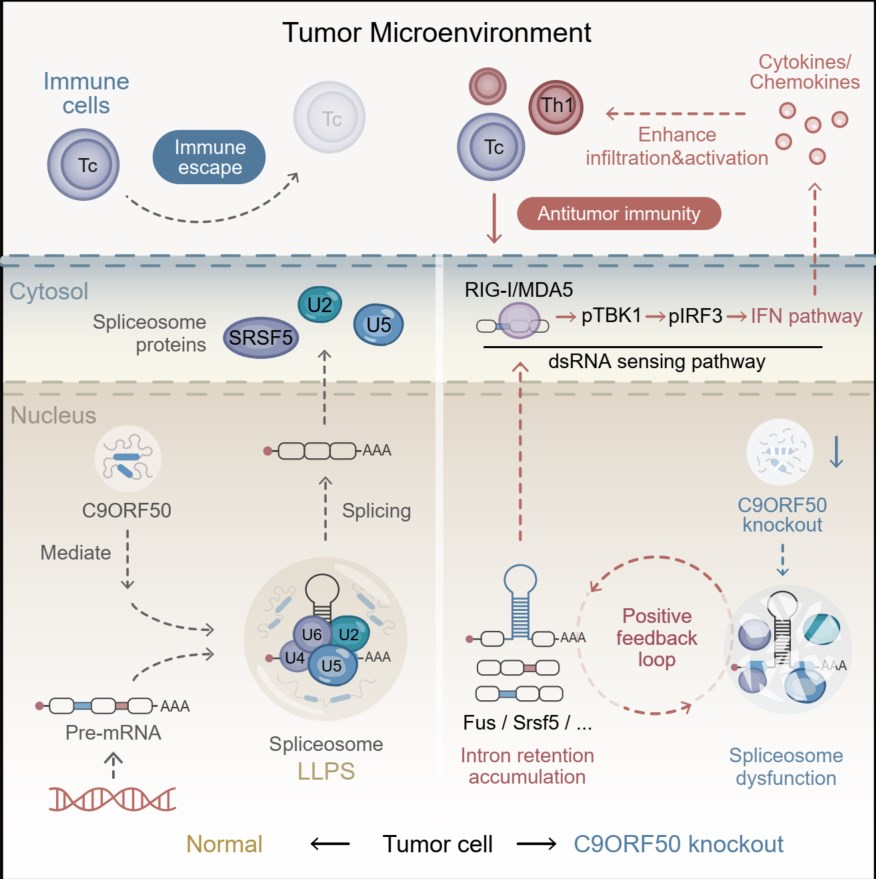
This study identifies the uncharacterized gene C9ORF50 as a novel regulator of immune evasion. Functioning as an intrinsically disordered protein, C9ORF50 drives liquid-liquid phase separation to facilitate spliceosome assembly and maintain RNA splicing fidelity. Genetic ablation or therapeutic inhibition of C9ORF50 disrupts this process, leading to widespread intron retention in pre-mRNAs of core spliceosome components. These unprocessed introns form immunogenic double-stranded RNA (dsRNA) that accumulates in the cytoplasm. This dsRNA is sensed by innate immune receptors (RIG-I/MDA5), activating the TBK1-IRF3 axis and subsequent type I interferon signaling. Consequently, this enhances the production of T-cell chemoattractants (CXCL9/10/11), promoting robust CD8⁺ and CD4⁺ T cell infiltration into tumors. Together, these findings reveal that C9ORF50 inhibition effectively converts immune-suppressive tumors into T cell-inflamed lesions, thereby enhancing immunogenicity and suppressing tumor growth.
Soil-borne legacy facilitates the dissemination of antibiotic resistance genes in soil–plant continua
- 23 November 2025
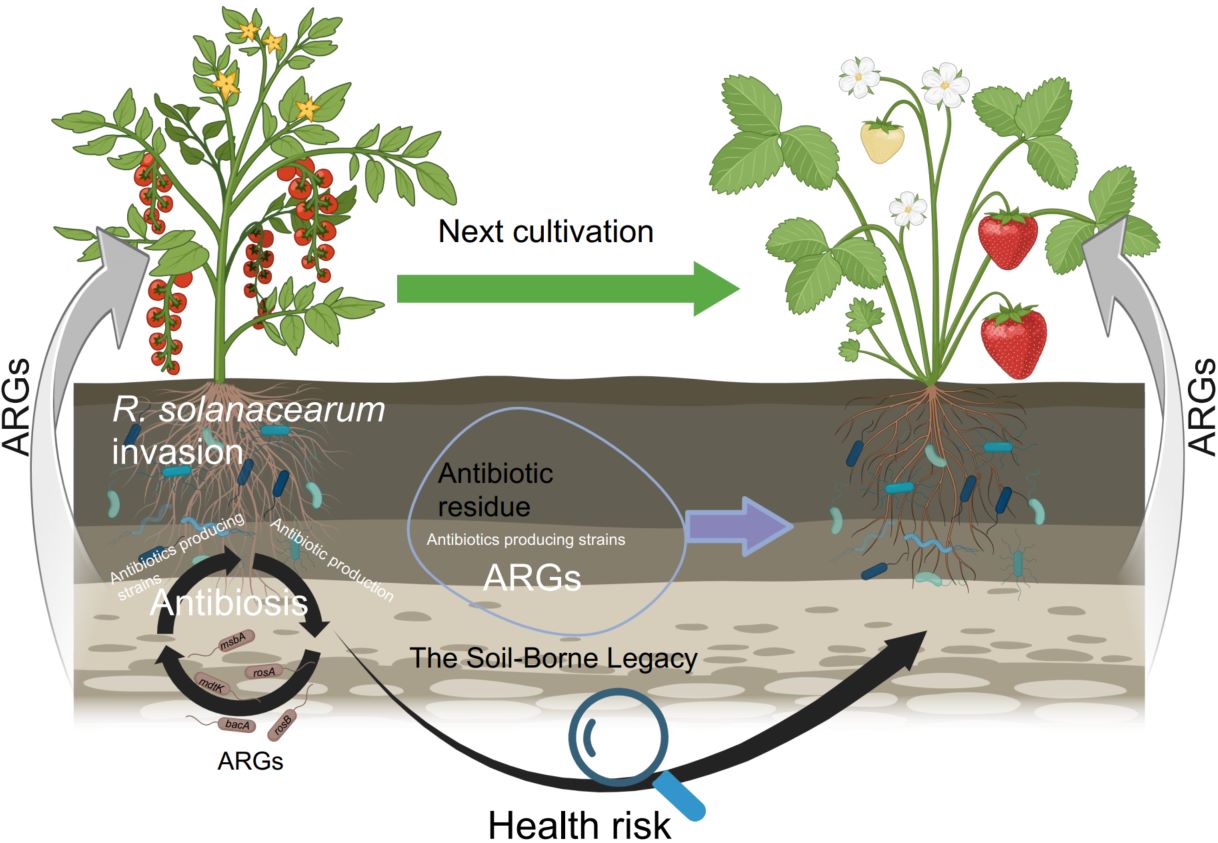
Antimicrobial resistance (AMR) disseminates throughout the soil–plant continuum via complex microbial interactions. Plants shape root- and leaf-associated microbiomes that sustain plant health; however, soil-borne legacies—enriched with antibiotic-producing microbes and resistance genes—govern AMR dynamics across agroecosystems. Using 16S rRNA gene sequencing, shotgun metagenomics, and high-throughput quantitative PCR, we profiled antibiotic resistance genes (ARGs), mobile genetic elements, and virulence factor genes across bulk soil, rhizosphere, phyllosphere, and root endosphere within soil–tomato and soil–strawberry continua. Recurrent bacterial wilt amplified the resistome, particularly polypeptide resistance genes, thereby establishing the rhizosphere as a major hotspot of ARG accumulation. Multidrug-resistant Ralstonia solanacearum (R. solanacearum) strains acted as major ARG reservoirs, harboring resistance determinants on both chromosomes and megaplasmids. Collectively, these findings demonstrate that pathogen-driven restructuring of the plant microbiome accelerates ARG dissemination, establishing soil-borne diseases as critical amplifiers of AMR across agricultural ecosystems.
PhyloSuite v2: The development of an all-in-one, efficient and visualization-oriented suite for molecular dating analysis and other advanced features
- 25 November 2025
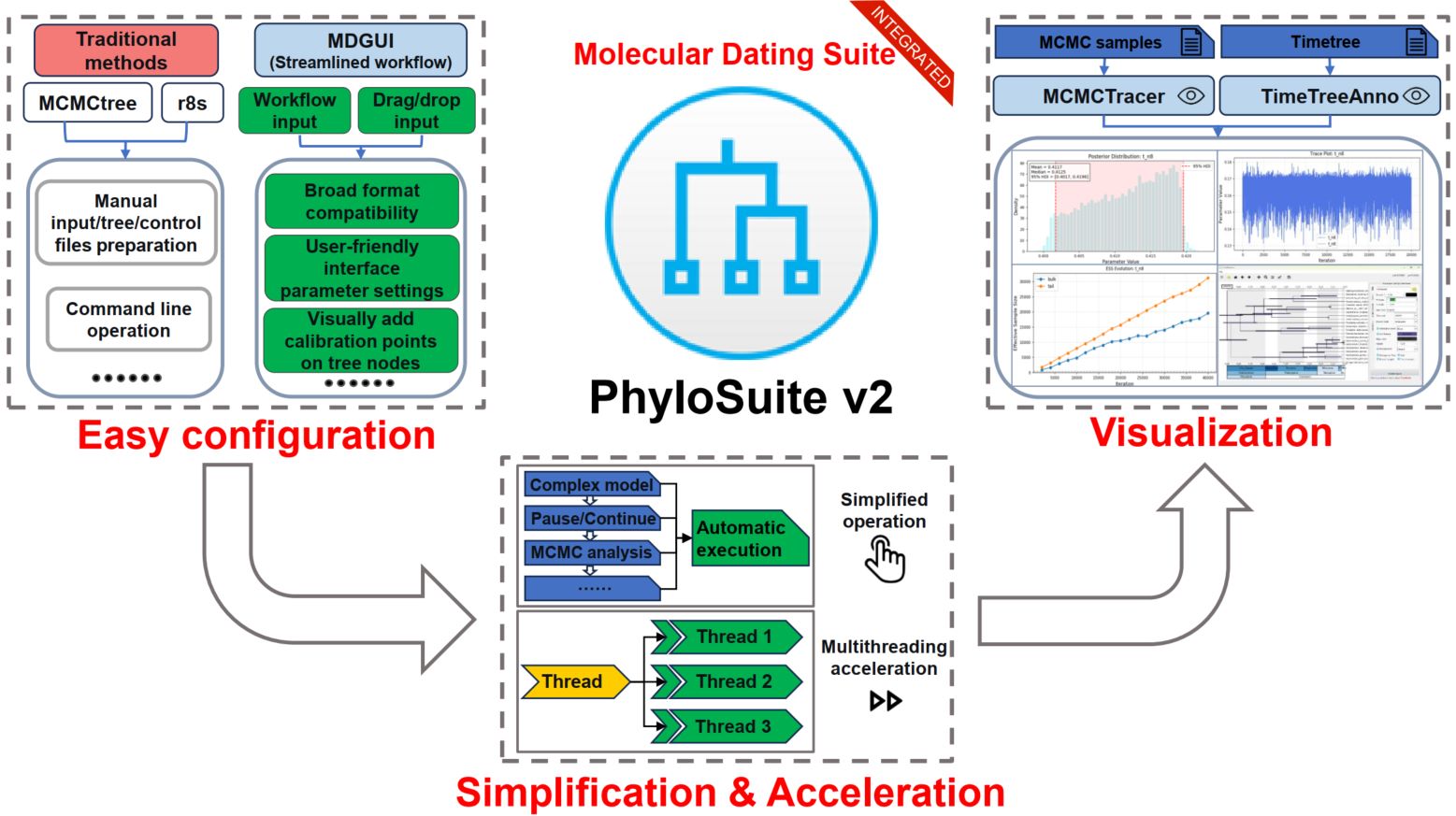
MCMCtree and r8s are among the most popular molecular dating tools in the current genomic era, but their utility is hampered by steep learning curves, particularly concerning input file formatting, the complexity of fossil calibration setup, tree visualization, and model selection. To enhance their usability and improve research efficiency, we developed three new tools: MDGUI (for molecular dating analysis), TimeTreeAnno (for timetree visualization), and MCMCTracer (for convergence assessment). We integrated these into the PhyloSuite v2 platform, along with MCMCtree and r8s plugins, to create a comprehensive molecular dating suite. Compared to existing solutions that we benchmarked, our toolkit offers a more intuitive interface and streamlined workflow, featuring visual calibration point configuration, support for multiple alignment formats, automated model selection and implementation for downstream analyses, one-click pause/resume functionality, multithreading acceleration, and on-demand MCMC convergence assessment and plotting. Furthermore, PhyloSuite v2 introduces other advanced features, including gene duplicate resolution during the extraction step, significantly accelerated data handling capabilities (specifically, format conversion and concatenation), deeper integration of the latest IQ-TREE models and functions, and further streamlining of the entire phylogenetic analysis workflow. The update also includes adaptation to high-resolution screens and numerous bug fixes. The source code for the new version of PhyloSuite is available at https://github.com/dongzhang0725/PhyloSuite.
The interplay between tissue-resident microbiome and host proteins by integrated multi-omics during progression of colorectal adenoma to carcinoma
- 04 November 2025
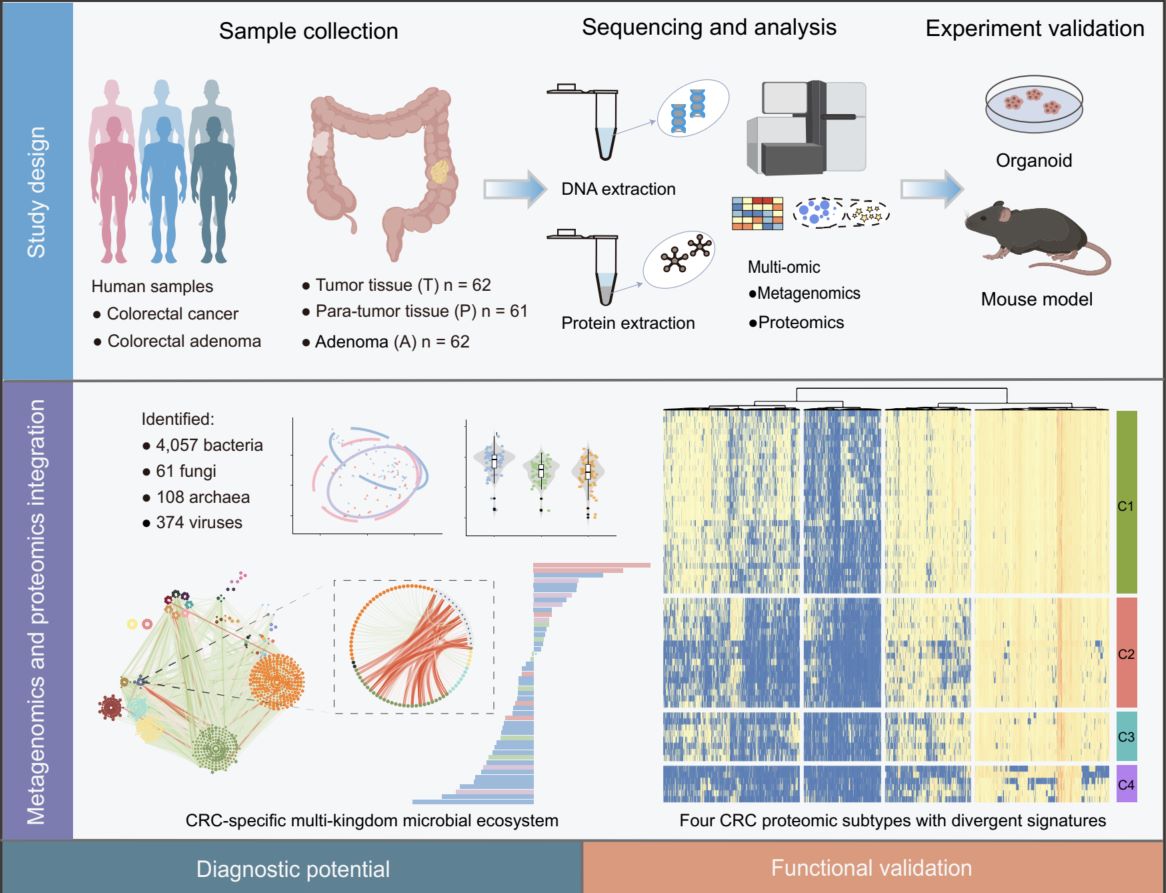
This study integrated metagenomic and proteomic profiling of 185 colorectal tissue samples—spanning adenoma (A), tumor (T), and para-tumor (P)—to characterize multi-kingdom microbiome and host protein dynamics in colorectal cancer (CRC). In total, 4057 bacterial, 61 fungal, 108 archaeal, and 374 viral species were identified, revealing CRC-specific microbial dysbiosis. Proteomic analysis defined four molecular subtypes (C1–C4) with distinct clinical outcomes. This study further developed a diagnostic model based on 14 microbial and 8 protein markers, which robustly distinguished adenoma from tumor (achieved an area under the receiver operating characteristic curve (AUROC) = 0.962) and early from advanced stages (AUROC = 0.926), with validation across multiple independent cohorts. Functional assays in patient-derived organoids and murine allografts confirmed that enterotoxigenic Bacteroides fragilis and Fusobacterium nucleatum promote tumor growth through Wnt/β-catenin and NF-κB pathway activation. These findings highlight dynamic host–microbiome interactions in CRC progression and provide novel biomarkers and therapeutic targets.
Whole microbiota transplantation restores gut homeostasis throughout the gastrointestinal tract
- 11 November 2025
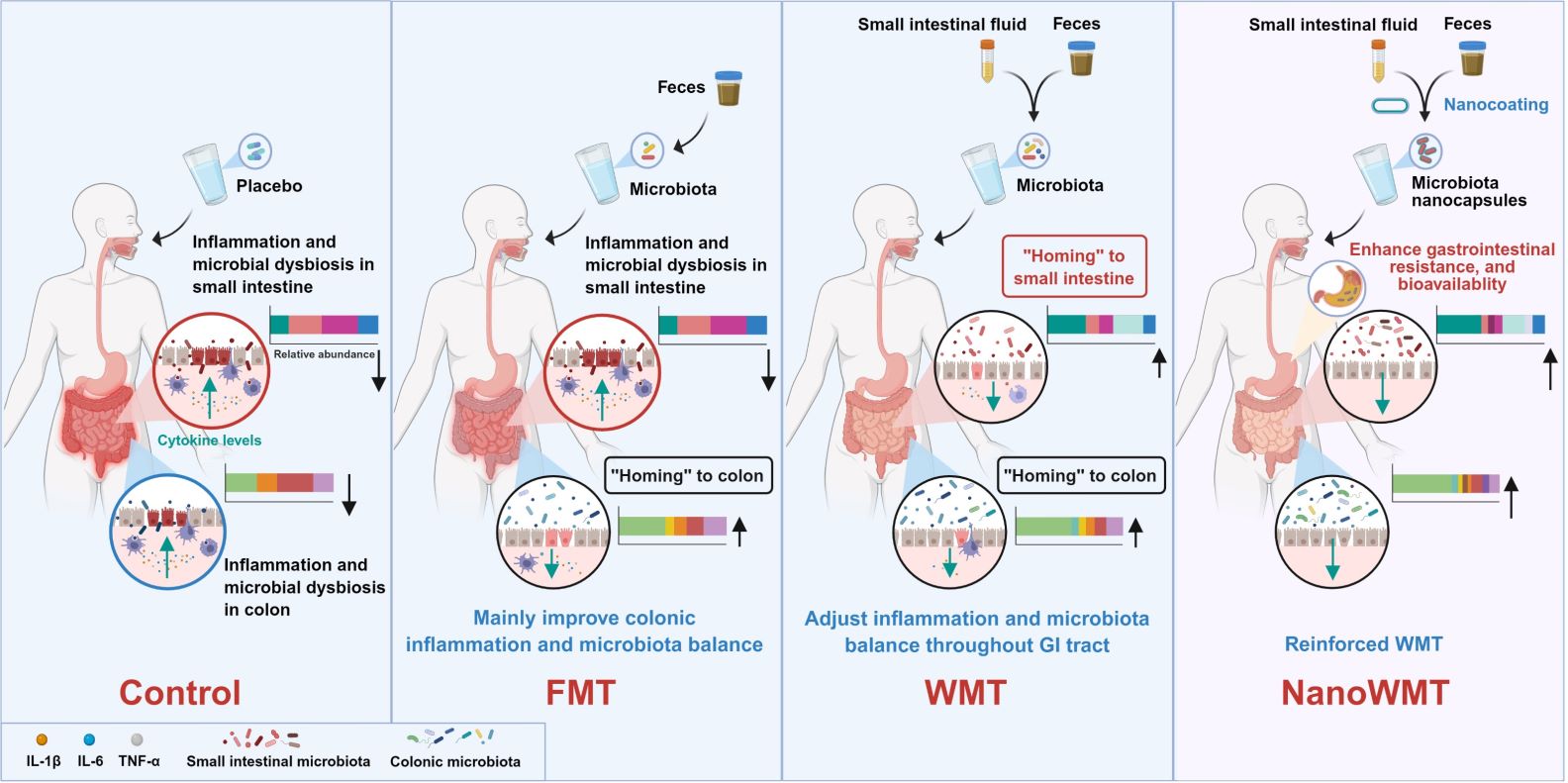
This study introduces whole microbiota transplantation (WMT), a synergistic therapeutic approach that concurrently transplants small intestinal and fecal microbiota. In germ-free mice, WMT outperforms conventional fecal microbiota transplantation (FMT) in restoring gut microbiota diversity and abundance. Moreover, in a chemotherapy-induced intestinal mucositis model, WMT alleviates intestinal inflammation and reverses microbiota dysbiosis. Encapsulation in layer-by-layer self-assembled nanocapsules further boosts microbial survival and colonization, amplifying WMT's anti-inflammatory effects and microbiota restoration in a mouse model of pan-intestinal infection. Overall, WMT represents a precise strategy for reshaping microbial homeostasis across the entire gastrointestinal tract, with therapeutic promise for inflammatory bowel diseases and small-intestinal disorders.
High-throughput generic single-entity sequencing using droplet microfluidics
- 30 October 2025

We present Generic Single Entity Sequencing (GSE-Seq), a droplet-based workflow that generates monoclonal barcodes by one-step PCR, performs dissolvable hydrogel-enabled reactions for genome processing, and attaches barcodes during in-droplet library preparation. Barcoded fragments are pooled and sequenced with PacBio long-read sequencing. Barcodes are extracted and clustered to recover single-entity genomes from viruses and bacteria, enabling high-throughput single-entity sequencing with long-read and accurate genome reconstruction.
Homoharringtonine suppresses acute myeloid leukemia progression by orchestrating EWSR1 phase separation in an m6A-YTHDF2-dependent mechanism
- 30 October 2025
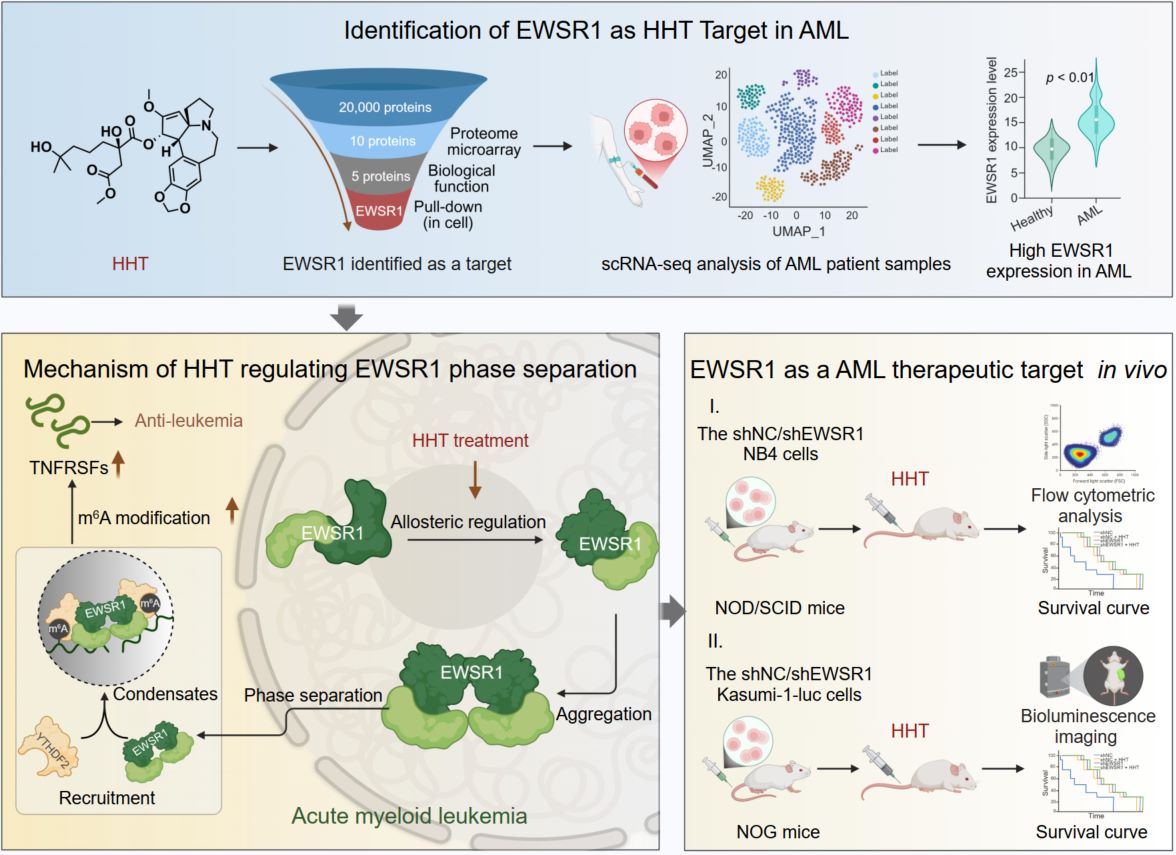
Homoharringtonine (HHT), a clinically approved anti-leukemic drug, directly binds the RNA-binding protein EWSR1. HHT induces an allosteric conformational switch in the RNA recognition motif of EWSR1, driving self-association and liquid–liquid phase separation (LLPS). The resulting condensates act as regulatory hubs that sequester the m6A reader YTHDF2, thereby preventing recognition and decay of m6A-modified transcripts. Stabilization of apoptosis-associated RNAs such as TNFRSF1B and HMOX1 disrupts leukemic cell homeostasis and suppresses AML proliferation. These findings identify EWSR1 as the direct effector of HHT and a predictive biomarker for therapeutic responsiveness in AML.
Nationwide profiling of vaginal microbiota in Chinese women reveals age-dependent shifts and predictive biomarkers for reproductive health
- 23 October 2025
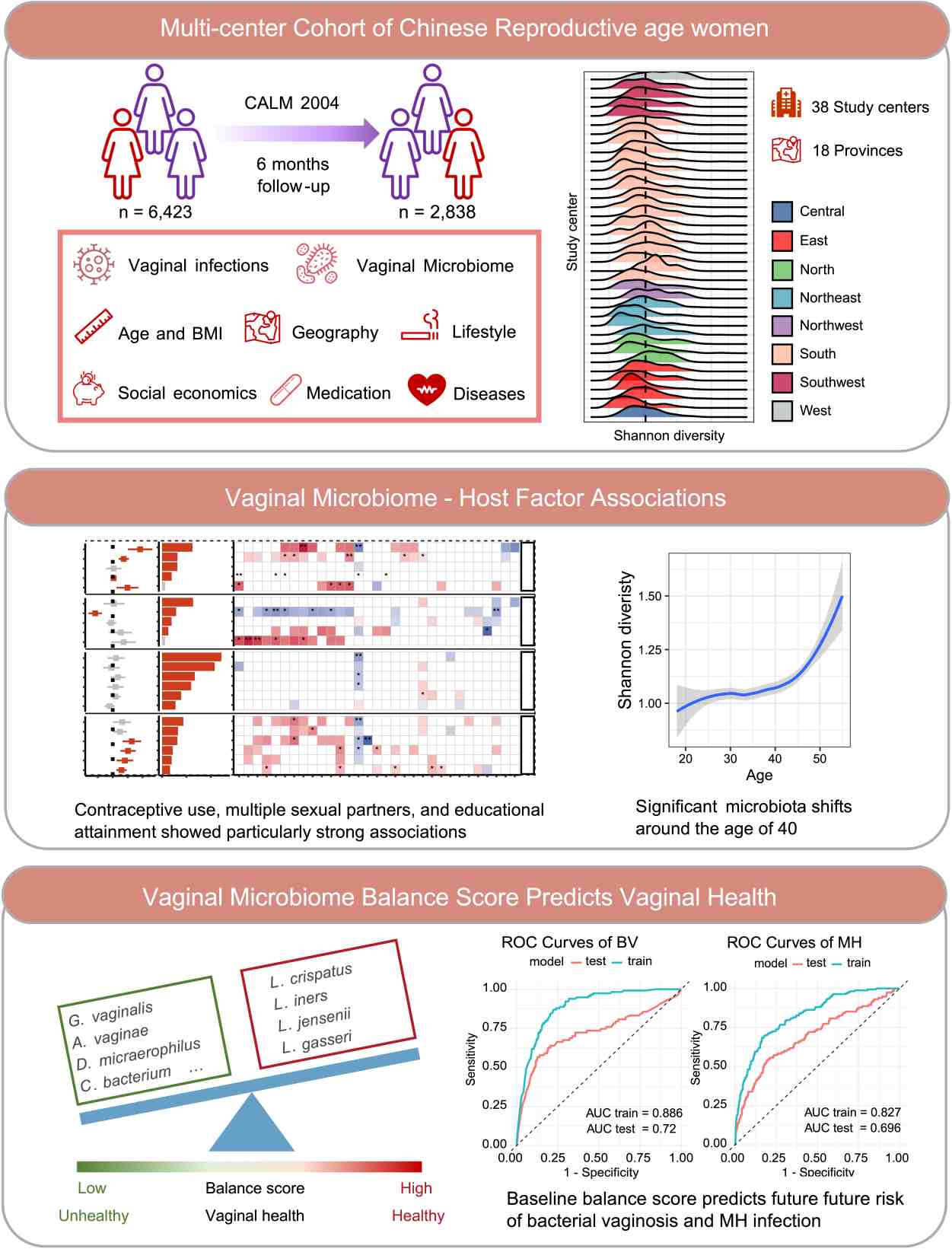
The vaginal microbiome is central to reproductive health, yet large-scale studies in East Asian populations remain scarce. Here, we characterized the vaginal microbiota of 6423 Chinese women of reproductive age across 18 provinces and assessed associations with 33 host factors. We observed a striking compositional transition around age 40, marked by declining Lactobacillus crispatus and enrichment of dysbiosis-associated taxa including Gardnerella vaginalis, independent of lifestyle or sociodemographic influences. Sexual behavior, contraceptive use, and educational attainment emerged as key determinants of community structure, differentially shaping Lactobacillus crispatus and Lactobacillus iners. Despite these associations, host factors explained less than 2% of overall variation, highlighting the resilience and individuality of the vaginal microbiome. To quantify vaginal health, we derived a microbiome balance score, validated it in external cohorts, and demonstrated its predictive power for incident bacterial vaginosis and sexually transmitted infections. Our findings establish a national-scale reference for the vaginal microbiome in Chinese women, reveal a midlife inflection point in microbial composition, and introduce a clinically actionable metric for risk stratification. These insights advance mechanistic understanding of host–microbiome interactions and inform strategies for precision interventions to preserve vaginal health.
iMeta Conference 2025: Creating high-impact international journals
- 15 October 2025

The iMeta Conference 2025, part of the iMeta Conference series, themed “Creating High-Impact International Journals,” held at the Huangjiahu Campus of Hubei University of Chinese Medicine from August 23rd to 25th, 2025, and focused on frontier topics such as microbiology, medicine, traditional Chinese medicine, botany, and research career development. The event aimed to support the development of researchers and strengthen the impact of academic journals. Through invited reports, thematic seminars, and poster presentations, the conference highlighted hot topics including multi-omics technologies, microbe-host interactions, AI-assisted research, live biotherapeutic products, and the modernization of traditional Chinese medicine. The event demonstrated the innovative momentum of interdisciplinary integration and technological convergence, providing an international platform for academic exchange and laying a foundation for building an innovative scientific research ecosystem and enhancing the global influence of Chinese academic journals.
A comprehensive benchmarking for spatially resolved transcriptomics clustering methods across variable technologies, organs, and replicates
- 09 October 2025
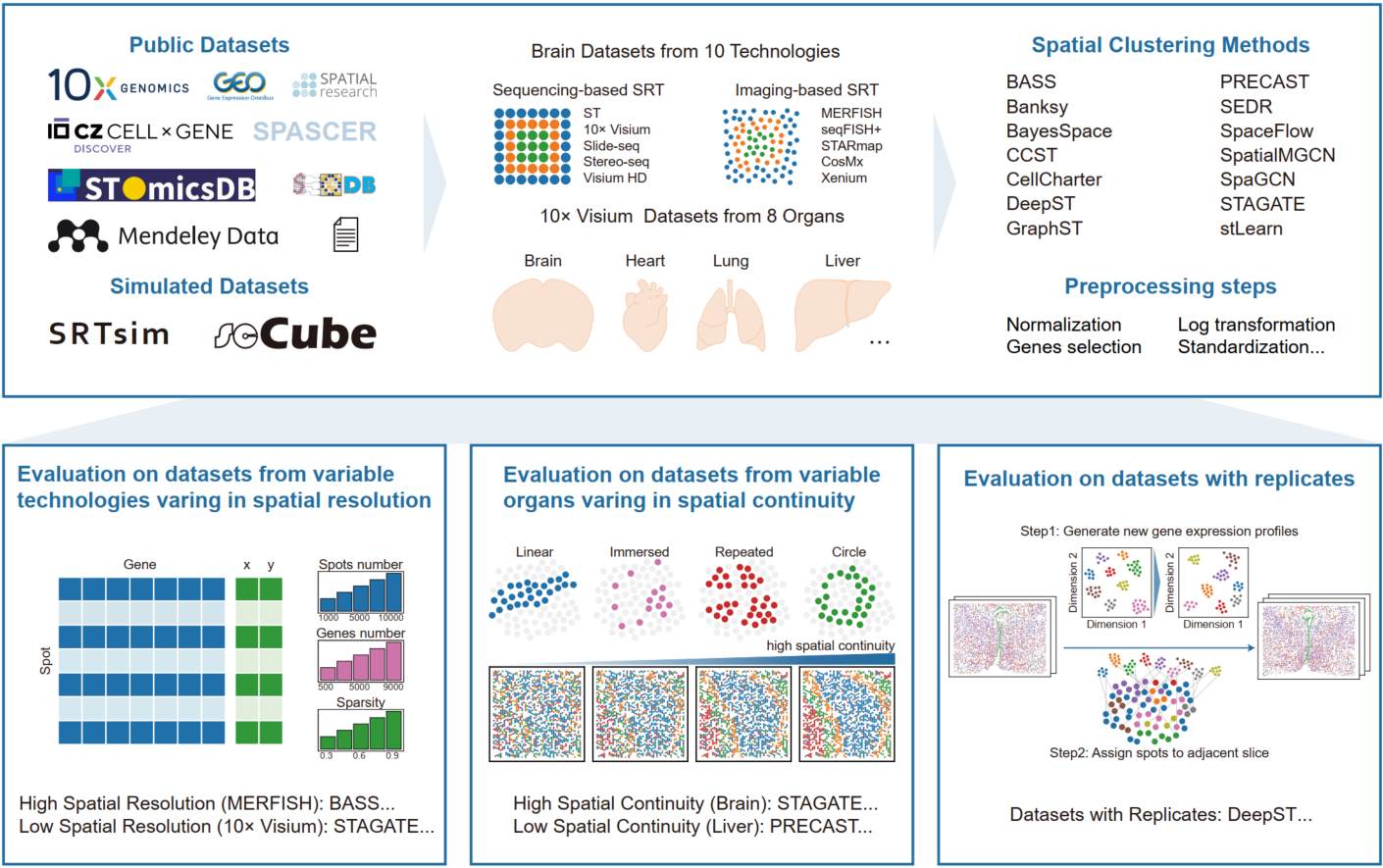
Spatial clustering is a critical step in spatially resolved transcriptomics. Here, we conducted a comprehensive benchmarking analysis of 14 spatial clustering methods using ~600 datasets, including both real-world and simulated data spanning ten technologies and eight organs. We provide practical recommendations for method selection across diverse technologies, organs, and biological replicates. Performance differences are largely explained by data characteristics, spatial patterns, and preprocessing strategies, and we establish an optimized preprocessing pipeline to enhance clustering robustness.
iMeta: Boosting academic sharing and collaboration via social media
- 09 October 2025
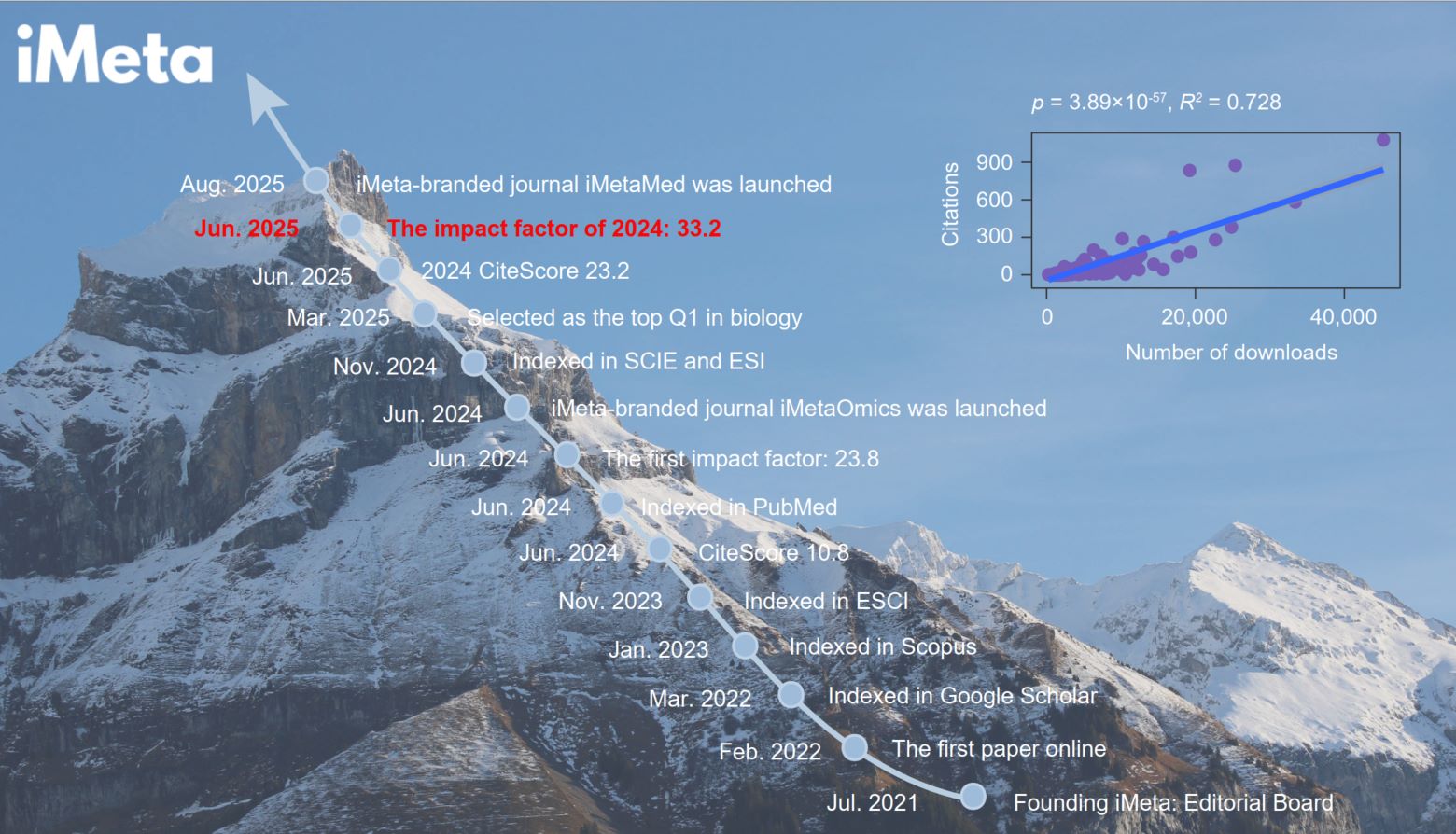
Social media platforms have revolutionized scientific communication by bridging gaps between researchers, academic journals, and global audiences. This article showcases iMeta, an open-access journal that leverages a diversified social media framework to enhance bilingual dissemination, boost full-text downloads, and amplify international influence. Since its editorial board founded, iMeta has achieved a series of milestones: integrating platforms like WeChat, Bilibili, X (formerly Twitter), YouTube, and BlueSky; launching iMeta-branded journals iMetaOmics and iMetaMed; and being indexed in prominent databases including PubMed, SCIE, and ESI. As of August 2025, the journal has recorded 1,334,761 full-text downloads and 10,560 total citations, with a 2024 impact factor of 33.2. A significant positive correlation between downloads and citations highlights how strategic social media integration and iMeta's growth drive visibility and influence, positioning it as a leading journal in its field.
Metagenomics and digital cell modeling facilitate targeted high-throughput sorting of anaerobic hydrogen-producing microorganisms
- 21 September 2025
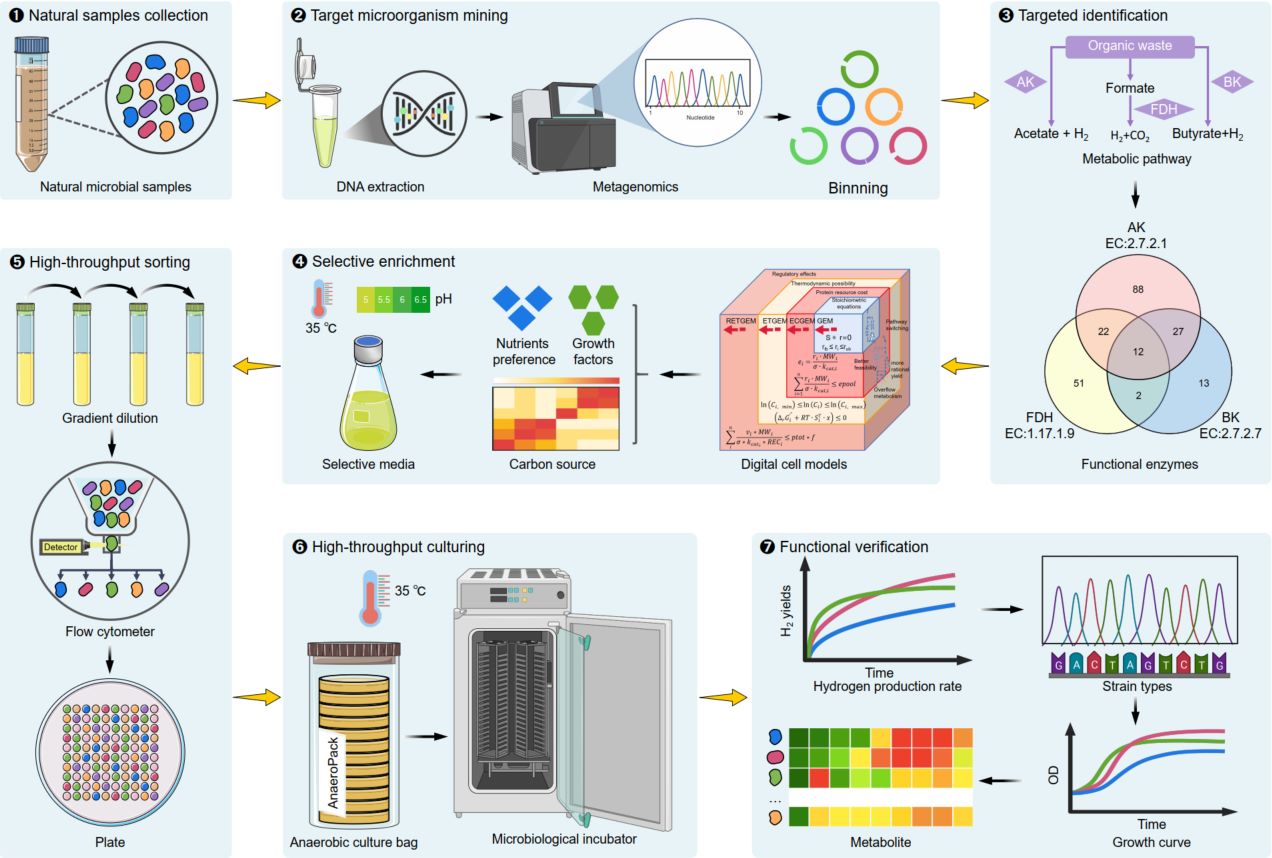
This study proposes a novel strategy that prioritizes functional recognition, followed by targeted high-throughput sorting, to enable the comprehensive, rapid, and efficient acquisition of target microorganisms. Using metagenomic sequencing and binning analysis, we identified 215 potential anaerobic hydrogen-producing strains from 12 large-scale biogas samples. Digital cell models were subsequently constructed from metagenome-assembled genomes, which guided the design of 14 selective culture media for enriching these hydrogen-producing bacteria. Flow cytometry-based high-throughput sorting successfully isolated 81 potential anaerobic hydrogen-producing strains, achieving a target acquisition rate above 37% and a survival rate exceeding 70%. This method holds broad potential for the discovery and sorting of functional microorganisms across diverse environments and may ultimately facilitate the development of synthetic microbiomes for industrial applications.
Characterizing the microbiome of “sterile” organs in experimental mice and evidence of translocation of bacteria from the gut to other internal organs
- 22 September 2025
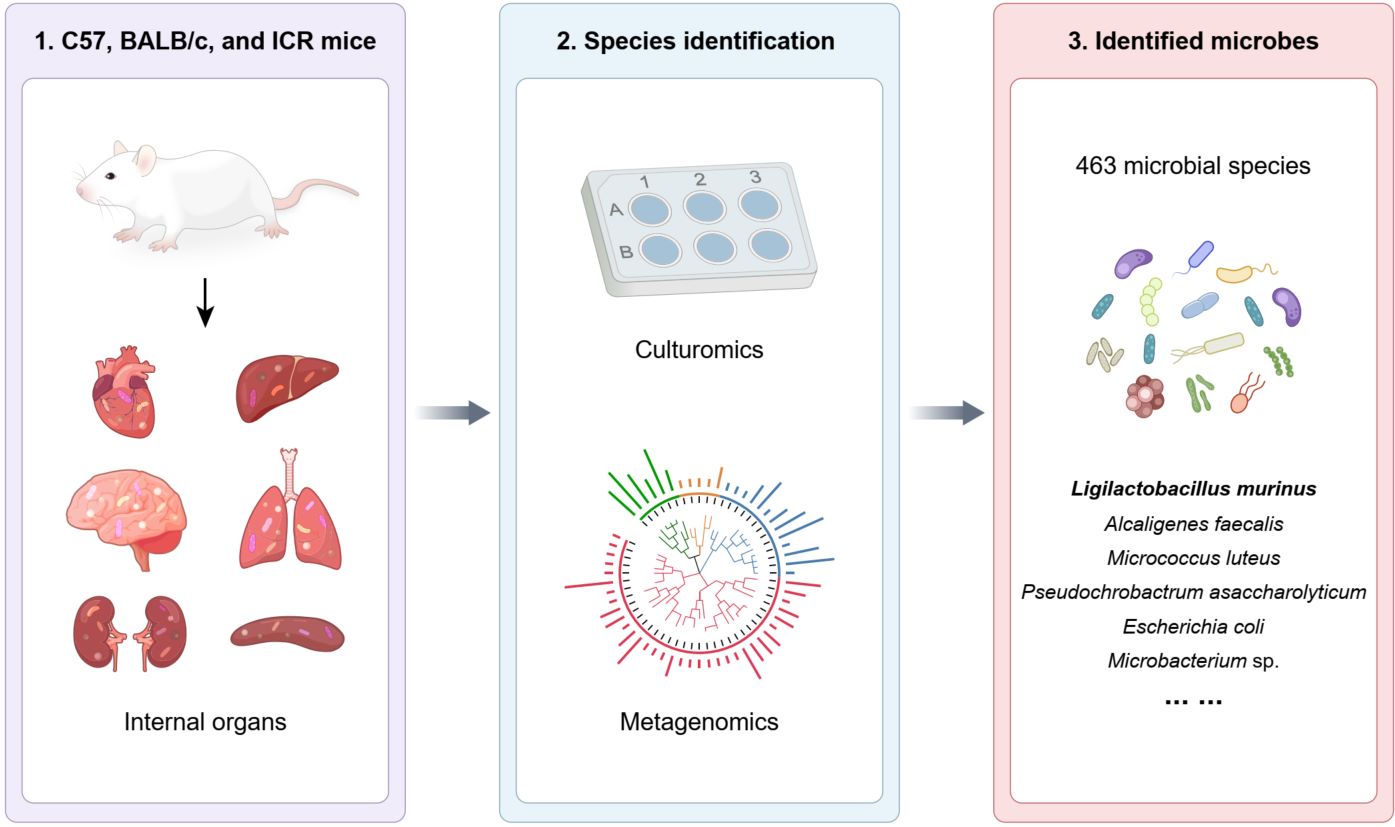
Using culturomics and metagenomics, we demonstrate the existence of non-pathogenic microbiota in the internal organs of healthy experimental mice, challenging the traditional dogma of organ sterility. Based on the analysis of 104 commercially sourced mice (C57BL/6J, BALB/c, ICR), the study reveals that over 20% of the analyzed mice harbored a high microbial burden in the internal organs and identified a total of 463 microbial species. Several species, including Ligilactobacillus murinus, Alcaligenes faecalis, Micrococcus luteus, Pseudochrobactrum asaccharolyticum, Escherichia coli, and Microbacterium sp., were frequently identified and were abundant in the mouse tissues. Further investigation implies that microorganisms in the “sterile” tissues could be associated with the gut microbiota. Given the wide use of experimental mice in medical and biological research, these findings of resident microorganisms in the animal's internal organs raise concerns about potential variability in experimental outcomes.
Lactobacillus reuteri-mediated dietary xylooligosaccharides enhance jejunal cell survival via suppression of oxygen-dependent apoptotic processes in a pig model
- 13 September 2025
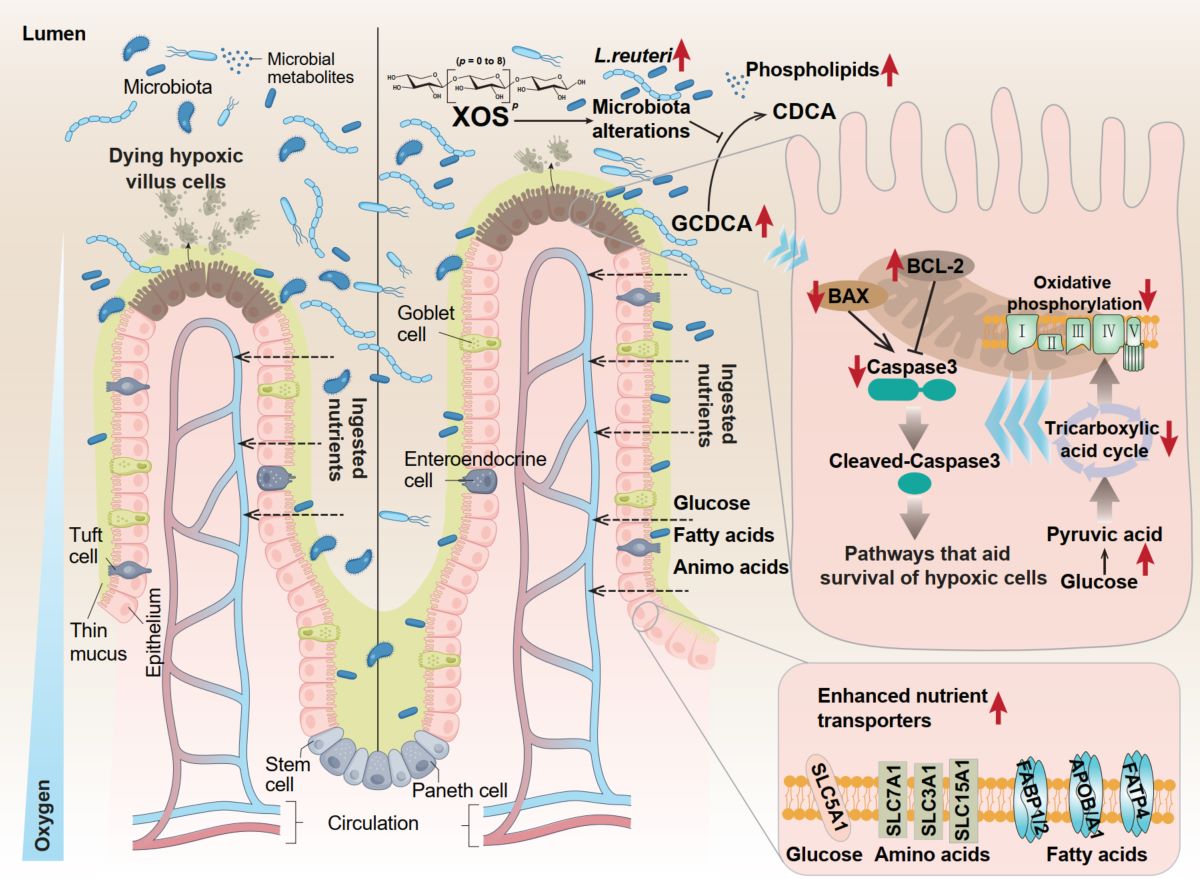
Interactions between functional oligosaccharides and small intestinal cells are increasingly recognized as critical for maintaining intestinal health. Using xylooligosaccharides (XOS) as a model, we demonstrate that XOS promote growth in piglets primarily by enhancing nutrient transport and increasing villus height in the jejunum. These effects are mediated by XOS-driven modulation of the intestinal microbiota, particularly the enrichment of Lactobacillus reuteri (L. reuteri) as a keystone species. L. reuteri reprograms epithelial energy metabolism toward reduced oxygen dependence, thereby inhibiting epithelial apoptosis and prolonging enterocyte survival. Notably, this protective effect is closely associated with elevated levels of the bile acid glycochenodeoxycholic acid (GCDCA), implicating a bile acid-dependent mechanism. Together, these findings reveal a microbiota- and metabolite-mediated pathway through which XOS regulate epithelial homeostasis and intestinal health.
Shaping the future of probiotics, live biotherapeutic products, and fecal microbiota transplantation: 30 scientific recommendations from the CHINAGUT Conference
- 02 October 2025
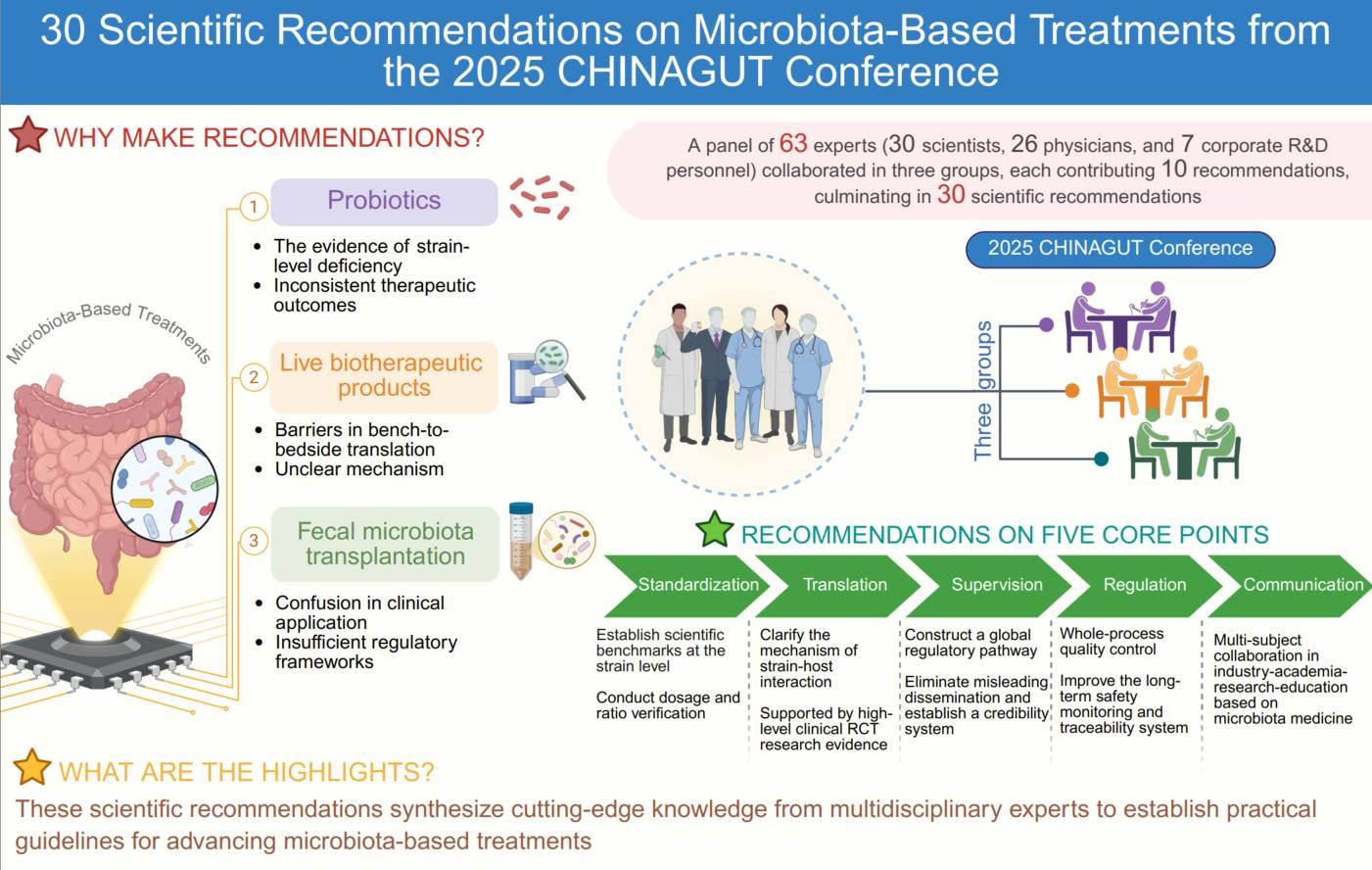
The 2025 CHINAGUT Conference has assembled a panel of 63 experts (30 scientists, 26 physicians, and 7 corporate R&D personnel) collaborated in three groups to present 30 scientific recommendations to advance probiotics, live biotherapeutic products, and fecal microbiota transplantation, addressing key issues on standardization, translation, supervision, regulation, and regulatory harmonization. These interdisciplinary guidelines aim to synthesize cutting-edge knowledge and practical needs to transform microbiota-based treatments from applications into precision-driven medical solutions, and serve as reference by scientific researchers, medical educators, pharmaceutical enterprises, clinicians, food and drug administrations, policymakers, and patients.
Multi-omics identifies microbiota-derived deoxycholic acid as a key mediator of blood-brain barrier dysfunction in Parkinson's disease
- 17 September 2025
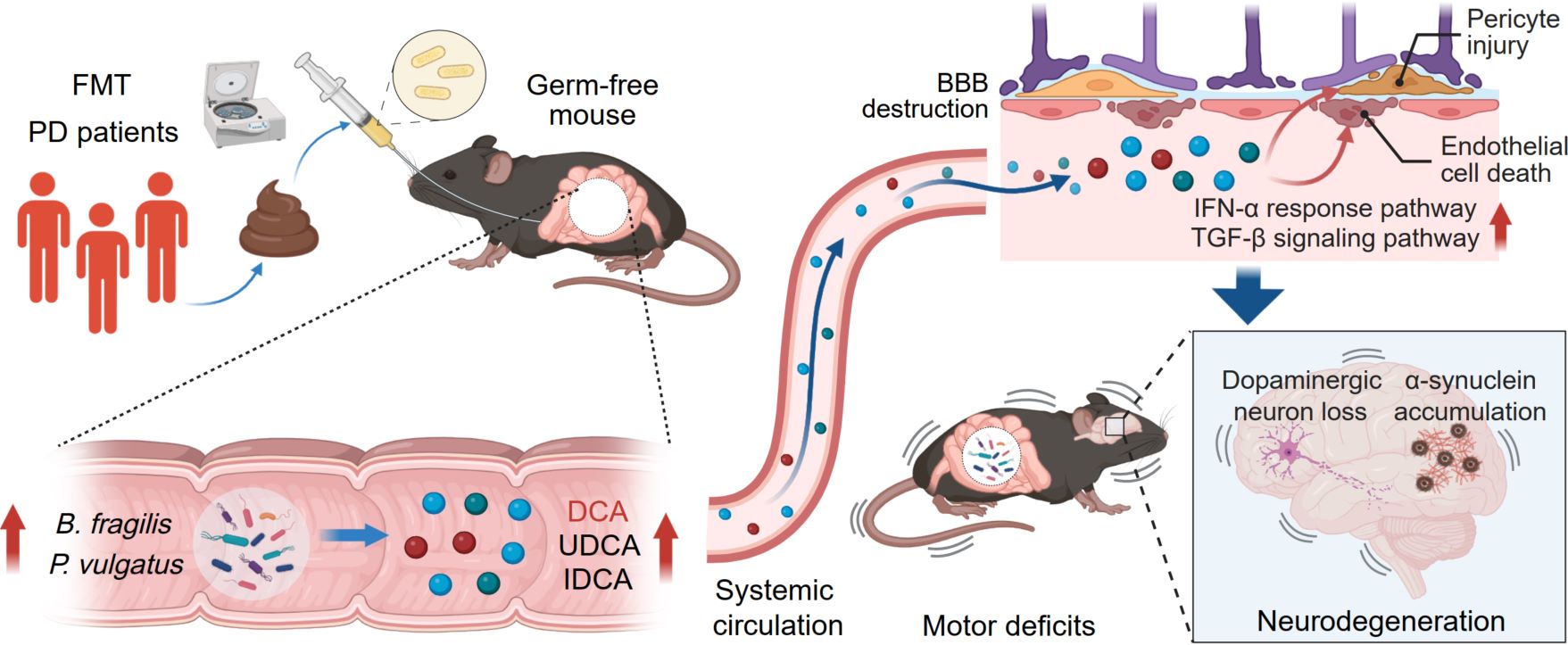
The gut microbiota derived from Parkinson's disease patients, enriched in Bacteroides fragilis (B. fragilis) and Phocaeicola vulgatus (P. vulgatus), may promote the elevations of deoxycholic acid, iso-deoxycholic acid, and ursodeoxycholic acid levels in the systemic circulation. The increased serum bile acids, in turn, contribute to the endothelial cell death and pericyte injury possibly through activating interferon alpha response and TGF-β signaling pathways at the blood-brain barrier in the midbrain, ultimately leading to the neurodegeneration and motor deficits in the germ-free mice.
Distinct microbial and metabolic shifts characterize acute coronary syndrome and recovery
- 19 September 2025

Early identification of patients at risk of acute coronary syndrome (ACS) remains a major unmet need, particularly among those with stable coronary artery disease (sCAD), where timely intervention could markedly improve outcomes. The gut microbiota has been implicated in coronary artery disease (CAD), but its ability to distinguish ACS from sCAD is not well defined. Here, we performed cross-sectional multi-omics profiling of fecal microbiota and plasma metabolites in 548 individuals, including participants with normal coronary arteries (N = 175), primary sCAD (N = 161), and ACS (N = 212). To assess whether disease-associated changes resolve with treatment, we further analyzed an independent cohort of ACS patients (N = 52) who transitioned to sCAD following standard therapy. We identified profound ACS-associated alterations in gut microbial composition and systemic metabolism, marked by enrichment of pro-inflammatory taxa such as Streptococcus spp. and elevated circulating levels of 3-hydroxybutyrate (3-HB). Strikingly, many of these ACS-specific microbial and metabolic signatures, including 3-HB and related microbial functional pathways, were restored toward sCAD-like levels after clinical recovery. Integrative models combining microbial taxa, metabolites, and clinical biomarkers robustly discriminated ACS from healthy controls (AUC = 0.91) and from sCAD (AUC = 0.83), significantly outperforming clinical markers alone (AUC = 0.69 for NCA vs. ACS; 0.59 for sCAD vs. ACS). These findings establish the gut microbiome and its metabolic outputs as key discriminators of ACS, reveal their dynamic resolution during disease recovery, and highlight their potential as biomarkers and therapeutic targets for cardiovascular risk stratification and management.
Unveiling soil microbial diversity through ultra-deep short-read metagenomic sequencing and co-assembly
- 18 August 2025
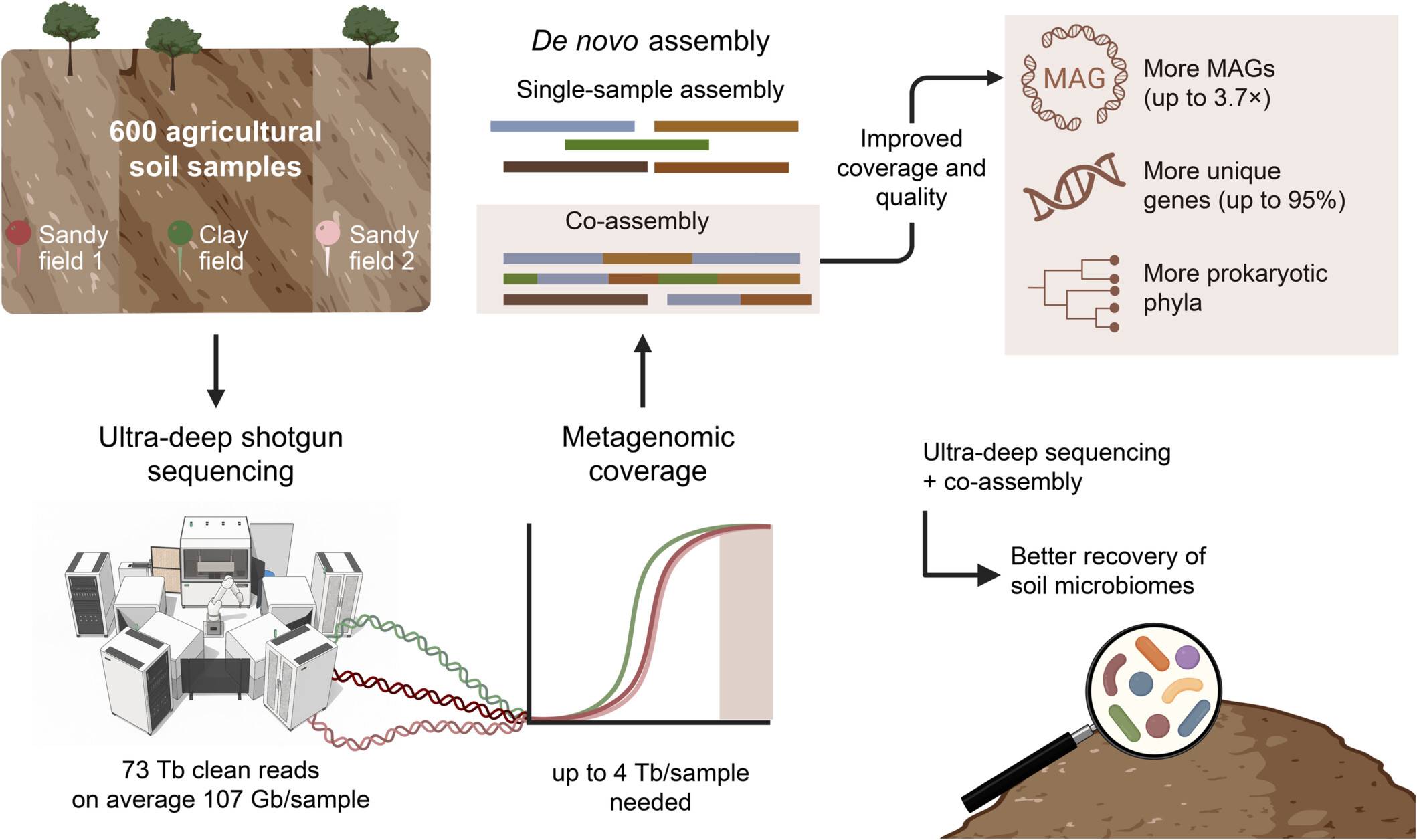
By combining ultra-deep short-read shotgun metagenomic sequencing with 5-sample co-assembly across 600 agricultural soil samples, we significantly enhanced the representation and recovery of microbial communities in both clay and sandy soils. Despite an average of 107 Gb clean reads per sample, projections indicated that 1–4 Tb per sample would be required to capture 95% of the microbial community. Co-assembly of five biological replicates markedly improved metagenomic recovery, yielding up to 3.7× more metagenome-assembled genomes, up to 95% more unique genes, and broader recovery of prokaryotic phyla compared to single-sample assemblies.
Geographic containment and virulence-resistance trade-offs drive the evolution of hypervirulent Klebsiella pneumoniae
- 04 September 2025
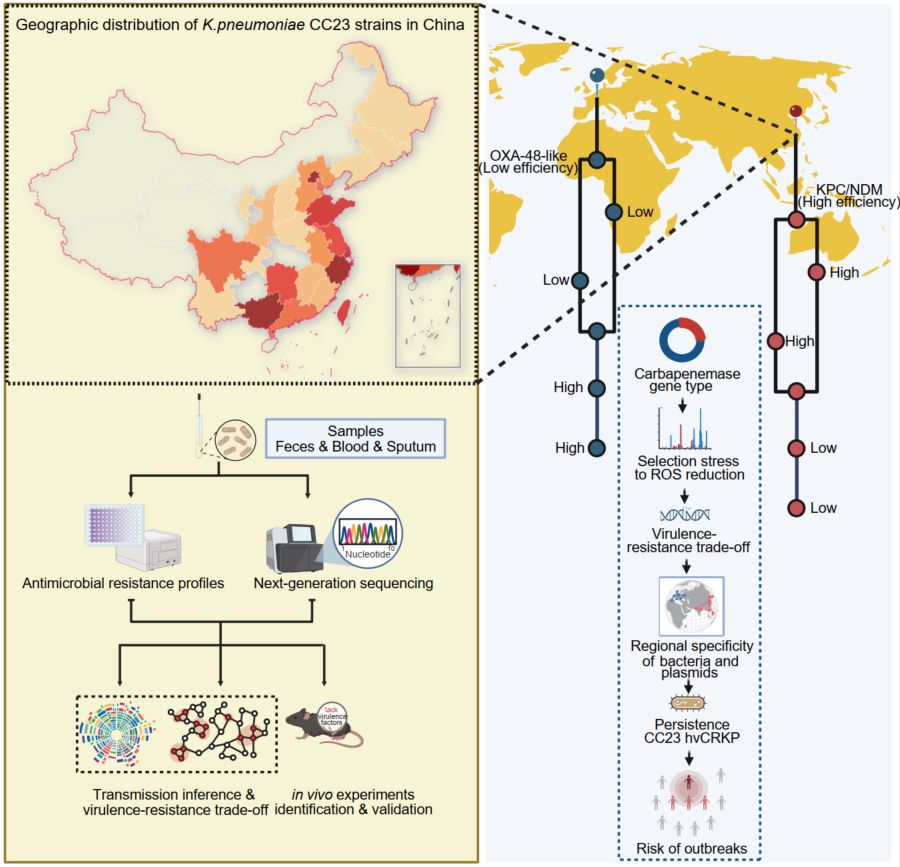
The global emergence of hypervirulent, carbapenem-resistant Klebsiella pneumoniae (hvCRKP) poses a paradox: why do such dangerous clones remain geographically confined? By analyzing over 2500 CC23 genomes across 90 years, we uncover a core evolutionary constraint—virulence and resistance rarely coexist without trade-offs. Potent carbapenemases (blaKPC, blaNDM) are frequently linked to large-scale deletions in virulence loci, while capsule production physically hinders plasmid uptake. In contrast, low-activity enzymes like blaOXA-48 preserve full virulence. Experimental validation and mutational profiling reveal how metabolic adaptation and structural barriers limit convergence. Our findings reveal an evolutionary balancing act that restrains global dissemination of hvCRKP—and suggest new levers for containment and control.
fastp 1.0: An ultra-fast all-round tool for FASTQ data quality control and preprocessing
- 09 September 2025
Metformin Administration Protects Against Deltoid Tendon Damage Through Activation of Notch Signaling
- 31 August 2025
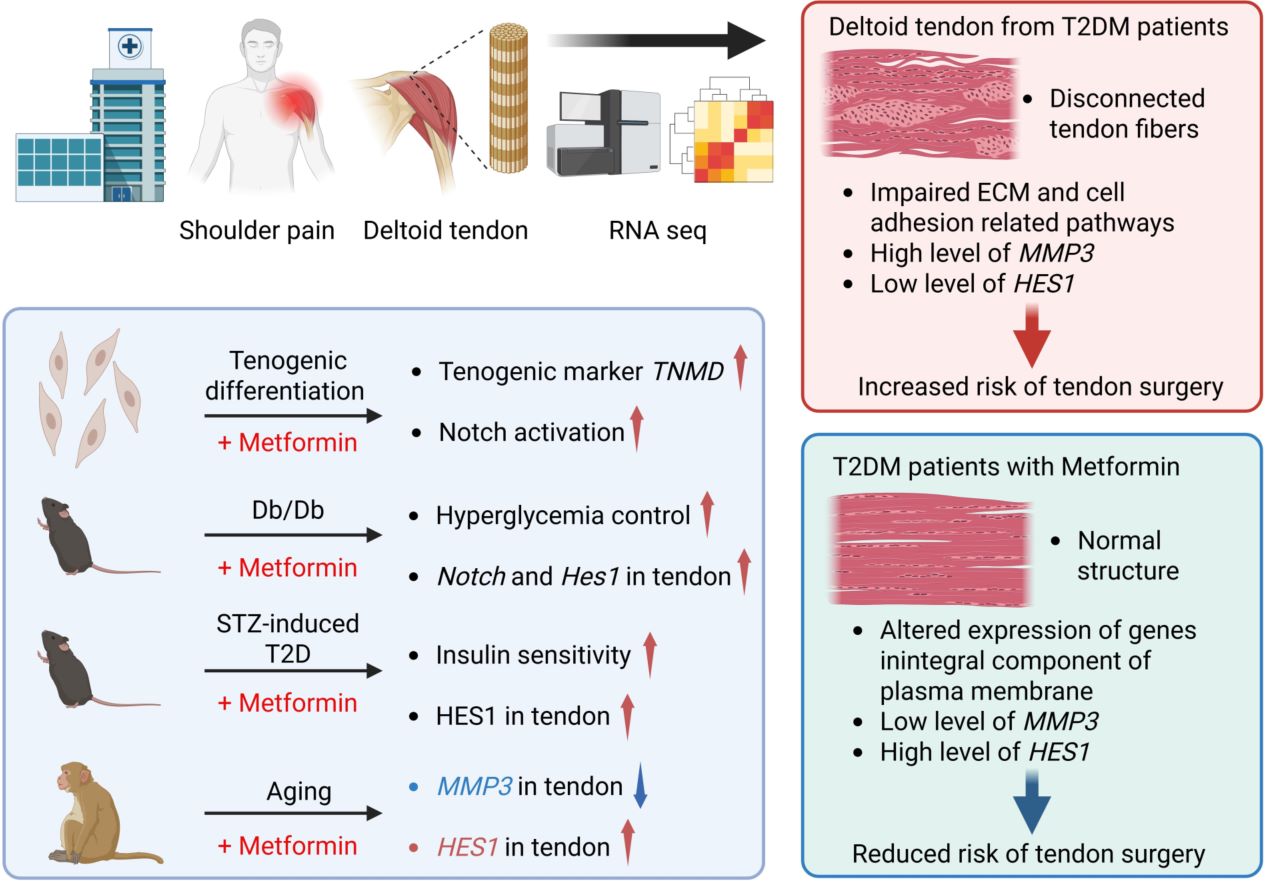
Type 2 Diabetes Mellitus (T2DM) is a growing global health concern that is associated with severe complications including diabetic tendinopathy. In this study, we found that T2DM patients had a significantly higher prevalence of tendon surgery compared to non-T2DM patients, which were alongside impaired ECM and cell adhesion. Notably, metformin-treated T2DM patients had a lower prevalence of tendon surgery compared to other medications, along with improved tendon fiber structure, downregulation of tendon damage marker MMP3, and upregulation of HES1, a Notch signaling effector gene. Metformin also activates Notch signaling in cultured tenocytes, and tendons from diabetic mice and aged monkey. These findings highlight metformin's potential to protect tendons by activating Notch signaling, offering novel insights into its therapeutic benefits beyond glucose regulation.
Quantifying cellular malignancy by tumor micro-environment measurement with multimodal fusion
- 30 August 2025
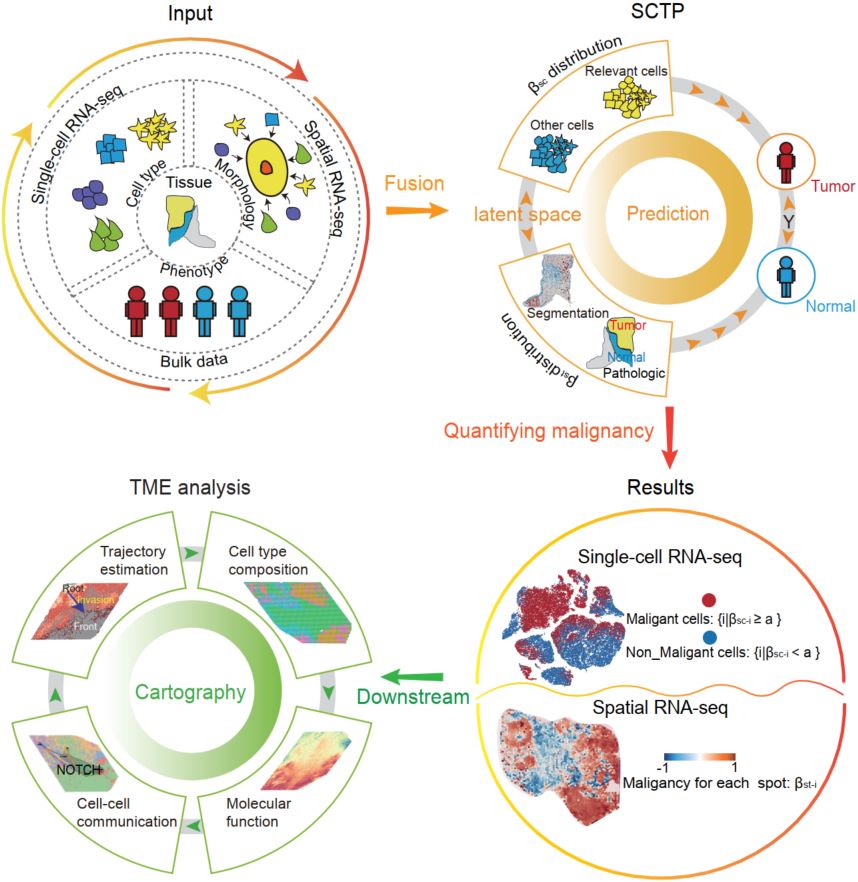
Conventional single-cell analytical approaches frequently fail to incorporate critical phenotypic indicators such as malignancy status, consequently restricting their biological interpretability within complex tumor microenvironments. To overcome this fundamental limitation, we developed Single-Cell and Tissue Phenotype prediction (SCTP), an innovative multimodal fusion framework that combines machine learning-enhanced deep learning architecture with phenotypic, cellular, and spatial data to achieve continuous quantification of malignancy at single-spot resolution. Our comprehensive evaluations demonstrate that SCTP consistently surpasses current state-of-the-art methods in malignant region identification across diverse tumor types through multiple-performance metrics. As a specific application, we implemented SCTP for colorectal cancer (SCTP-CRC), successfully achieving three key objectives: precise identification of CRC-associated cells, high-resolution mapping of their spatial architecture, and reliable detection of early-stage biomarkers including MUC2 and MMP2. Overall, SCTP establishes a powerful unified platform that effectively connects microscopic cellular characteristics with macroscopic phenotypic manifestations, significantly advancing tumor microenvironment analysis and supporting clinical translation in precision oncology.
PSOSP uncovers pervasive SOS-independent prophages with distinct genomic and host traits in bacterial genomes
- 18 August 2025

Prophages are ubiquitously present in bacterial genomes, significantly influencing host physiological and ecological functions. We present Prophage SOS-dependency Predictor (PSOSP), a novel bioinformatics tool that predicts prophages induction modes by analyzing the Heterology Index (HI) of LexA protein binding to target DNA, classifying prophages into SOS-dependent prophages (SdPs) and SOS-independent prophages (SiPs). PSOSP was experimentally validated to accurately distinguish SdPs from SiPs in a test set, achieving 100% sensitivity and specificity. Applying PSOSP to 49,333 complete bacterial genomes, we inferred prophage induction modes in 15,493 bacterial genomes and identified 11,806 SiPs. These SiPs are widely distributed across 145 bacterial genera and exhibit distinct genomic features compared to SdPs. Correspondingly, the hosts of these two prophage types are hypothesized to differ in their physiological characteristics. These findings, powered by PSOSP, provide not only novel insights into the diverse induction mechanisms but also a critical methodology for future phage–host interaction studies.
Bavachalcone targets transferrin receptor and sensitizes gemcitabine to affect bladder cancer progression
- 17 August 2025
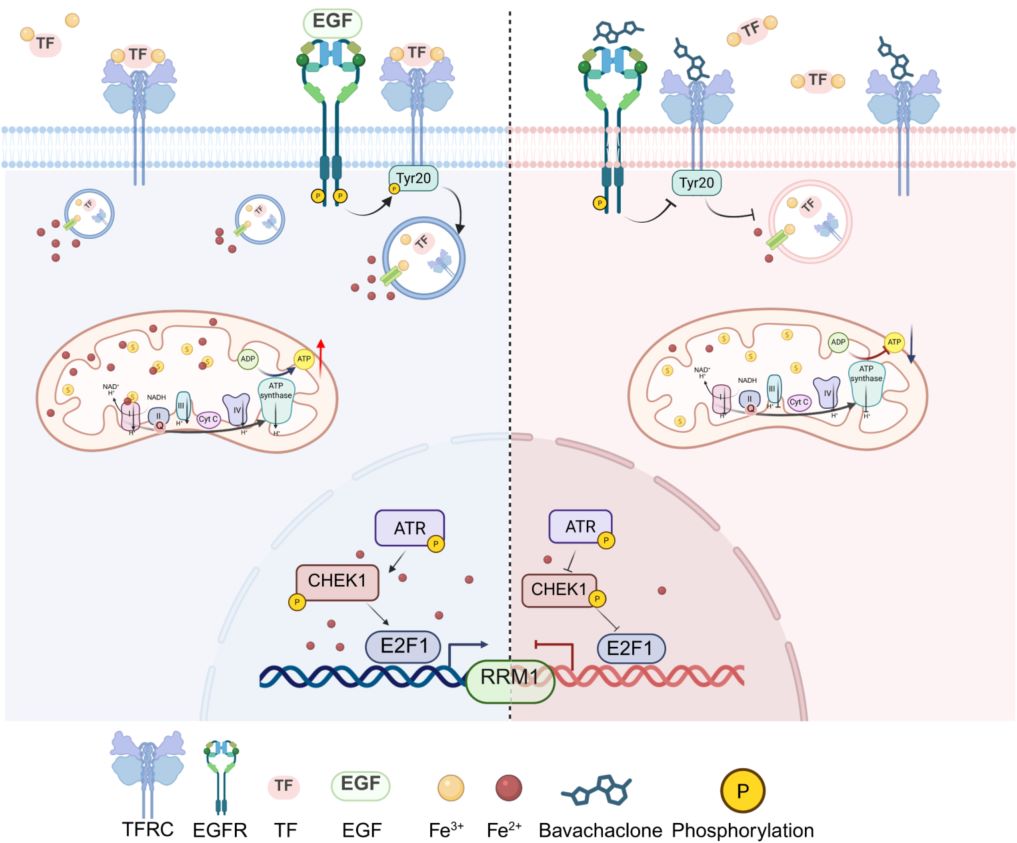
Gemcitabine resistance drives bladder cancer recurrence and progression. Using high-throughput drug screening in bladder cancer cells, we identified Bavachalcone (Bava) as a potent gemcitabine sensitizer. Mechanistically, Bava simultaneously targets transferrin receptor (TFRC) and epidermal growth factor receptor (EGFR). It competes with transferrin (Tf) for TFRC binding, reducing cellular iron influx, and inhibits EGFR-mediated phosphorylation of TFRC at tyrosine 20 (Y20). These actions disrupt mitochondria iron utilization and impairs respiration. The combination of Bava and gemcitabine synergistically inhibits the repair of gemcitabine-induced DNA damage, while suppressing the iron-dependent ATR-CHEK1-E2F1 pathway and downregulating RRM1 expression. Patient-derived xenograft models confirmed the superior antitumor efficacy of the Bava-gemcitabine co-treatment compared to monotherapies. Clinically, elevated TFRC and RRM1 expression correlates with poor prognosis, supporting their utility as biomarkers of bladder cancer. Our study identified Bava as the first small-molecule TFRC inhibitor that overcomes gemcitabine resistance through iron modulation, providing both mechanistic insights and a promising therapeutic strategy for bladder cancer.
The microbiome in cancer
- 30 August 2025
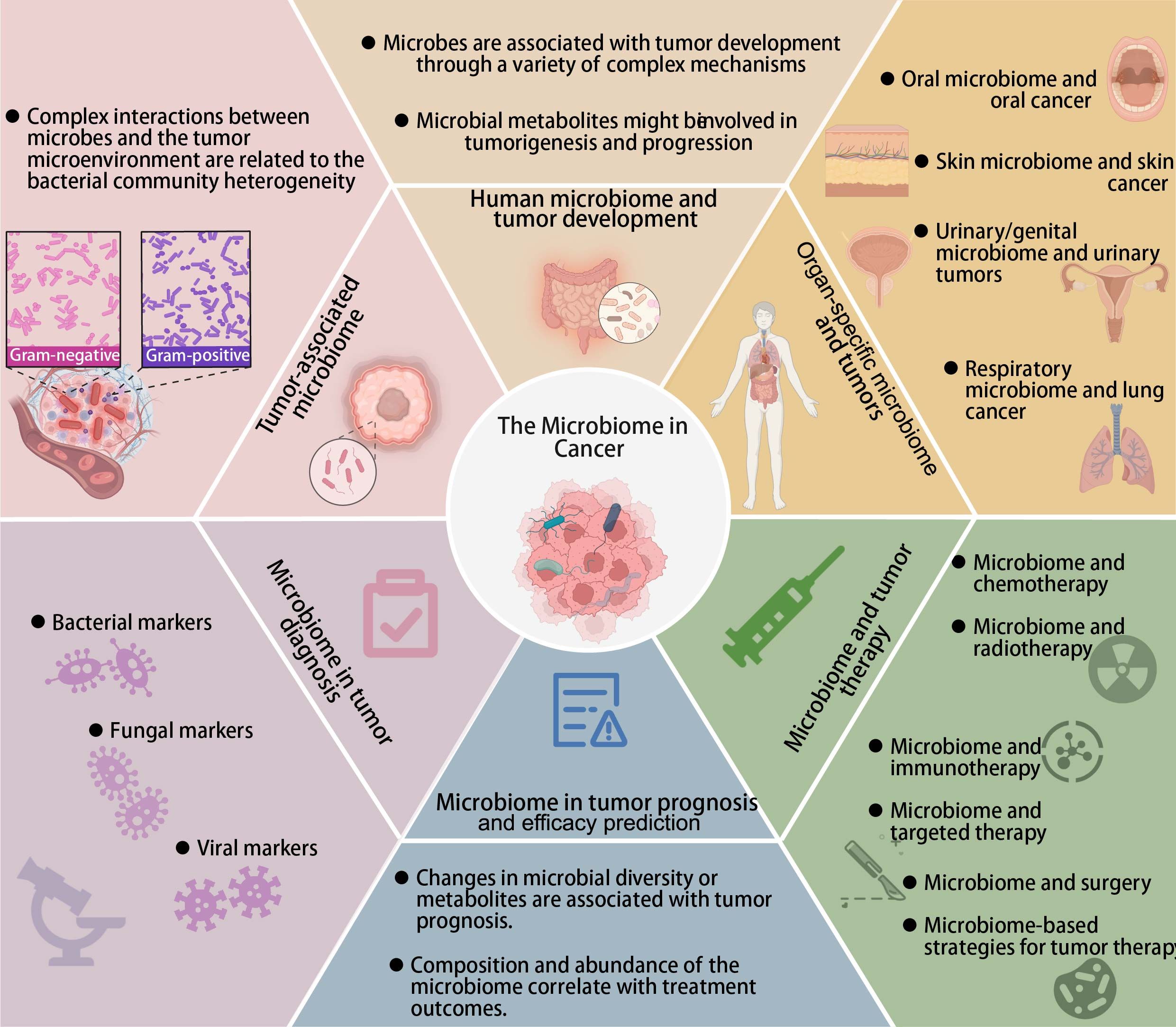
The human microbiome is now recognized as a central regulator of cancer biology, intricately shaping tumor development, immune dynamics, and therapeutic response. This comprehensive review delineates the multifaceted roles of bacteria, viruses, and fungi in modulating the tumor microenvironment and systemic immunity across diverse cancer types. We synthesize current evidence on how microbial dysbiosis promotes carcinogenesis via chronic inflammation, metabolic reprogramming, genotoxic stress, immune evasion, and epigenetic remodeling. This review emphasizes organ-specific microbiome signatures and highlights their potential as non-invasive biomarkers for early detection, treatment stratification, and prognosis. Furthermore, we explore the impact of intratumoral microbiota on cancer therapies, uncovering how microbial metabolites and host–microbe interactions shape therapeutic efficacy and resistance. Finally, advances in microbiome-targeted strategies, such as probiotics, fecal microbiota transplantation, and engineered microbes offer new avenues for adjunctive cancer therapy. This review provides a roadmap for future investigation and underscores the transformative promise of microbiome modulation in cancer prevention and treatment.
Discovery of a novel tetrapeptide as glucose homeostasis modulator with bifunctionalities of targeting DPP-IV and microbiota
- 11 August 2025
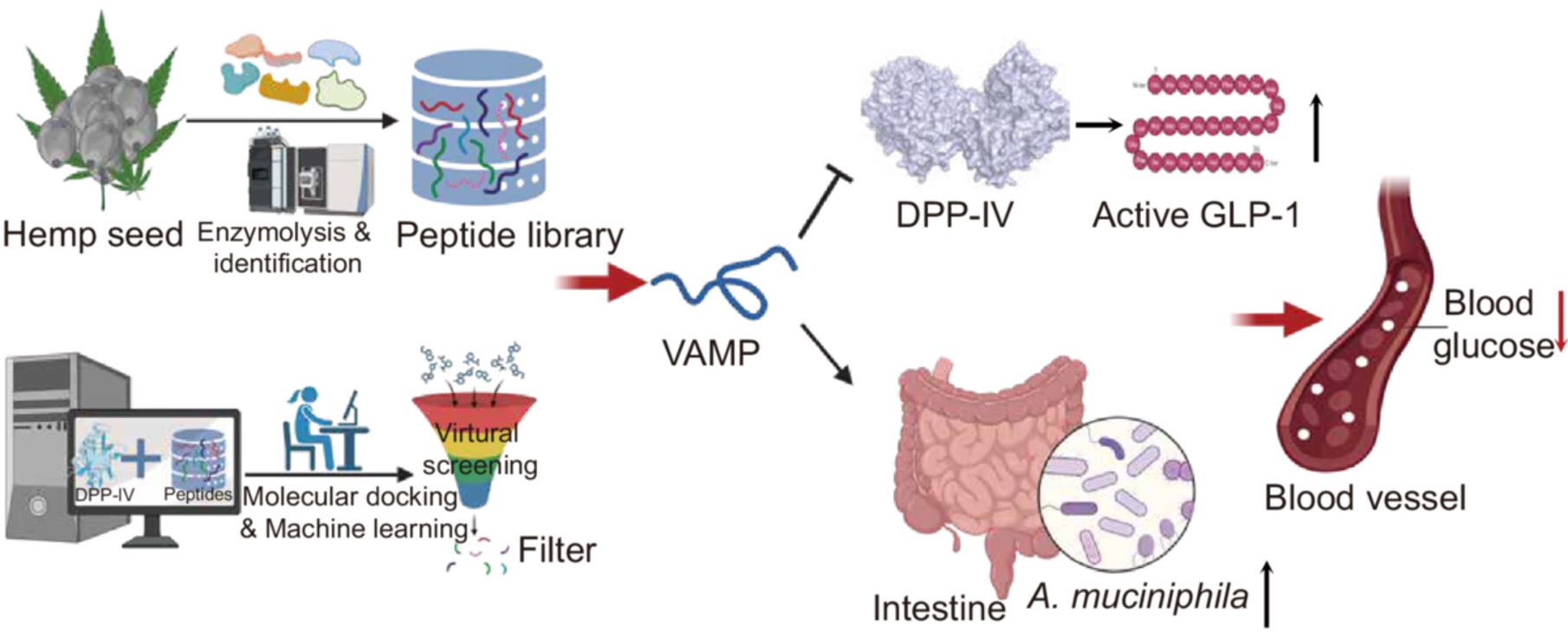
AI-driven and computation-based high-throughput methods were developed to mine novel dipeptidyl peptidase IV (DPP-IV) inhibitory peptides from hemp seed proteins. The identified peptide VAMP demonstrates a glucose-lowering effect through dual mechanisms: inhibition of DPP-IV activity and selective promotion of intestinal Akkermansia muciniphila growth.
RRM2-targeted nanocarrier enhances radiofrequency ablation efficacy in hepatocellular carcinoma through ferroptosis amplification and immune remodeling
- 06 August 2025
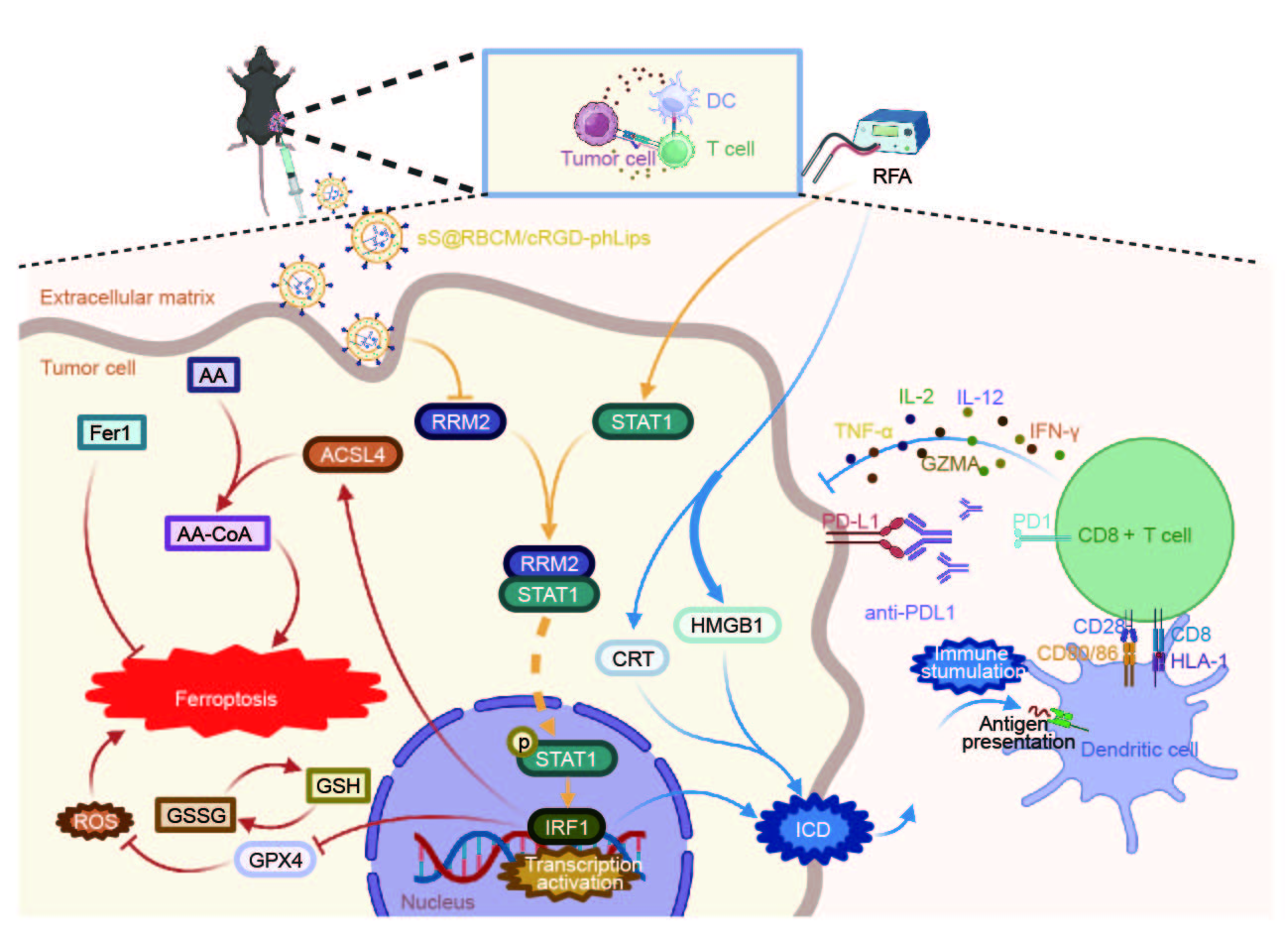
This study proposes an innovative therapeutic approach by combining RRM2 gene knockout with a nanocarrier system, significantly enhancing the efficacy of radiofrequency ablation for hepatocellular carcinoma. The study developed a tumor microenvironment-responsive nanosystem that achieves synergistic effects through SPIO-mediated and RRM2 knockout-induced ferroptosis, along with precise targeting of tumor microenvironment regulation.
Akkermansia muciniphila-derived hypoacylated rough-type lipopolysaccharides alleviate diet-induced obesity via activation of TLR4−IL-23−IL-22 immune axis
- 17 July 2025
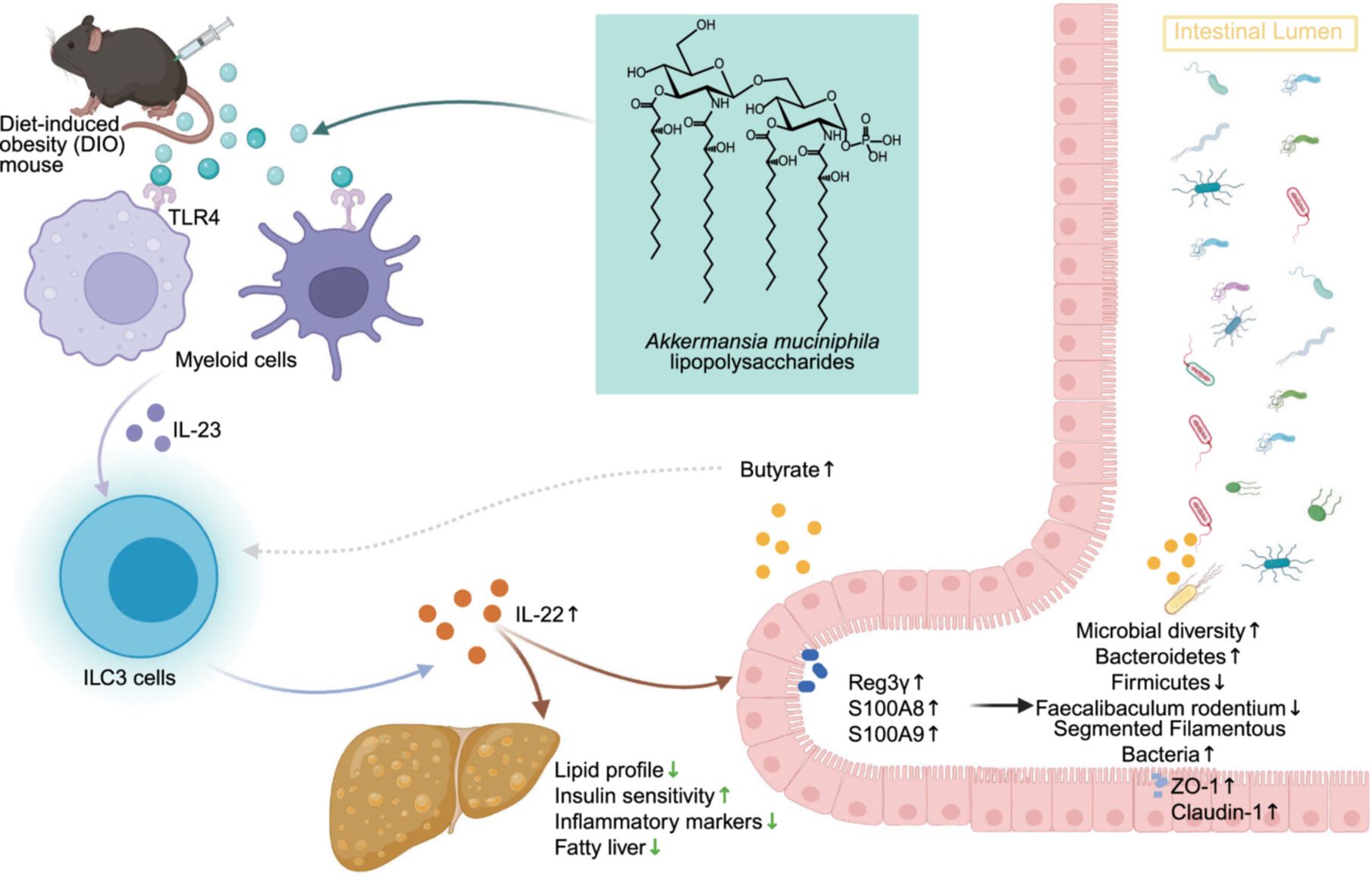
This study demonstrates that hypoacylated, rough-type lipopolysaccharides (LPS) derived from Akkermansia muciniphila strain HW07 (ALPS) alleviates diet-induced obesity. ALPS acts as a weak TLR4 agonist and significantly reduces weight gain, improves metabolic parameters, and restores gut barrier integrity in obese mice. The antiobesity effects are mediated primarily through activation of the TLR4−IL-23−IL-22 immune axis, leading to increased IL-22 production. ALPS also reshapes the gut microbiota (e.g., increases SFB, C. cocleatum) and elevates beneficial short-chain fatty acids. These findings identify A. muciniphila LPS as a safe and effective therapeutic candidate for metabolic disorders via TLR4-dependent IL-22 induction. The diagram was created using Microsoft PowerPoint and https://BioRender.com.
Gut microbial-derived 3,4-dihydroxyphenylacetic acid ameliorates reproductive phenotype of polycystic ovary syndrome
- 15 July 2025
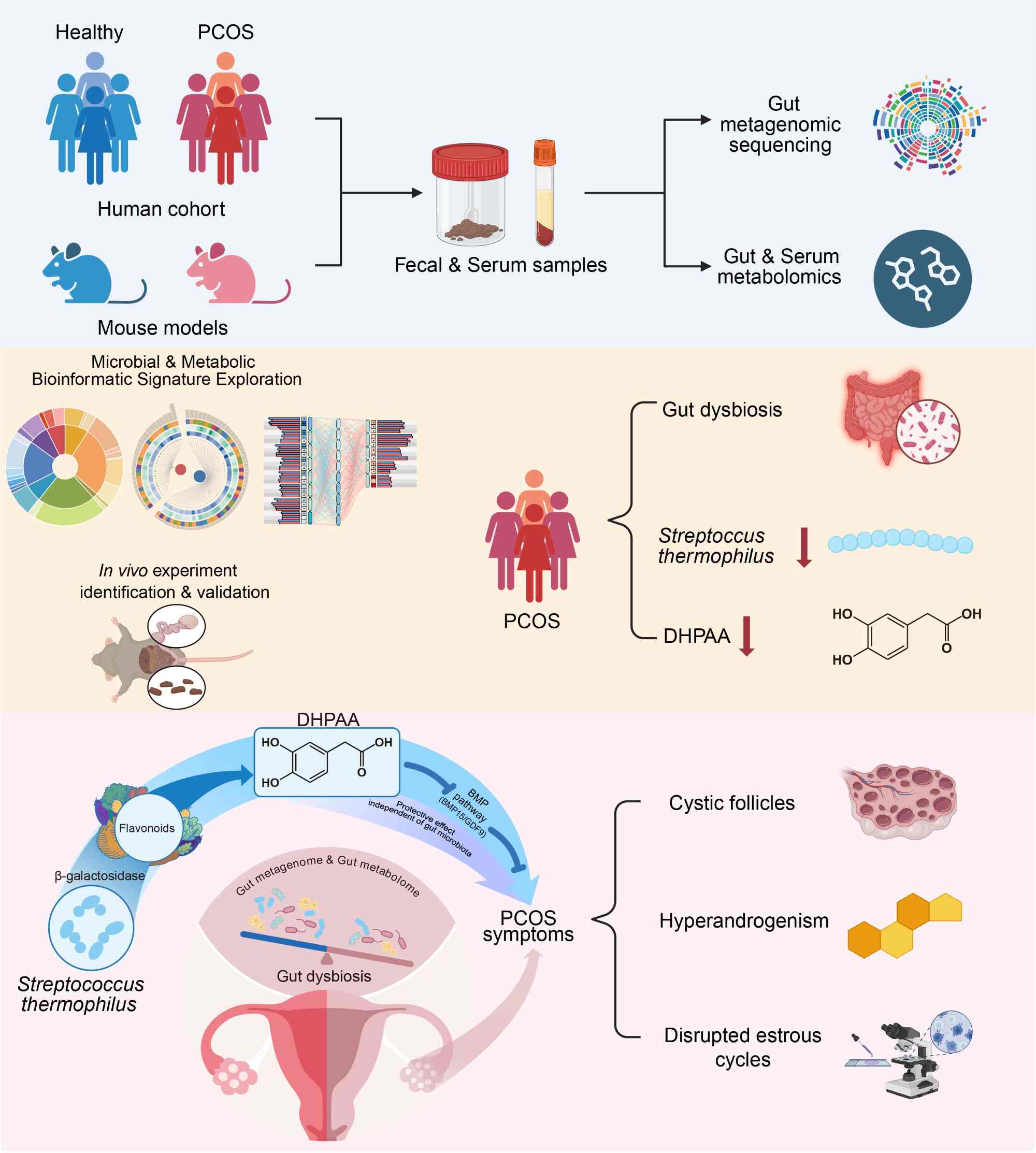
Polycystic ovary syndrome (PCOS) is a prevalent endocrine and reproductive disorder affecting women of reproductive age. While the gut microbiota has been implicated in PCOS pathophysiology, the role of microbial-derived metabolites as mediators of host–microbe interactions remains poorly defined. Here, we integrated untargeted gut metabolomics with metagenomic profiling in patients with PCOS and identified a marked depletion of 3,4-dihydroxyphenylacetic acid (DHPAA), a flavonoid-derived microbial catabolite. Oral administration of DHPAA ameliorated PCOS-like phenotypes in two mouse models by suppressing bone morphogenetic protein signaling and reducing anti-Müllerian hormone (AMH) levels. We found that DHPAA production depends on gut microbial degradation of dietary flavonoids. We further identified a bacterial species, Streptococcus thermophilus, consistently depleted in PCOS across two human cohorts and a mouse model, restored DHPAA levels and improved reproductive outcomes in mice. Conversely, a β-galactosidase-deficient mutant of S. thermophilus failed to confer these benefits, highlighting β-galactosidase as a critical enzyme in DHPAA biosynthesis. Our findings establish DHPAA as a key microbial metabolite linking diet, microbiota, and reproductive health, and propose its potential as a novel therapeutic candidate for PCOS.
A gut microbiota-bile acid axis inhibits the infection of an emerging coronavirus by targeting its cellular receptor aminopeptidase N
- 03 July 2025
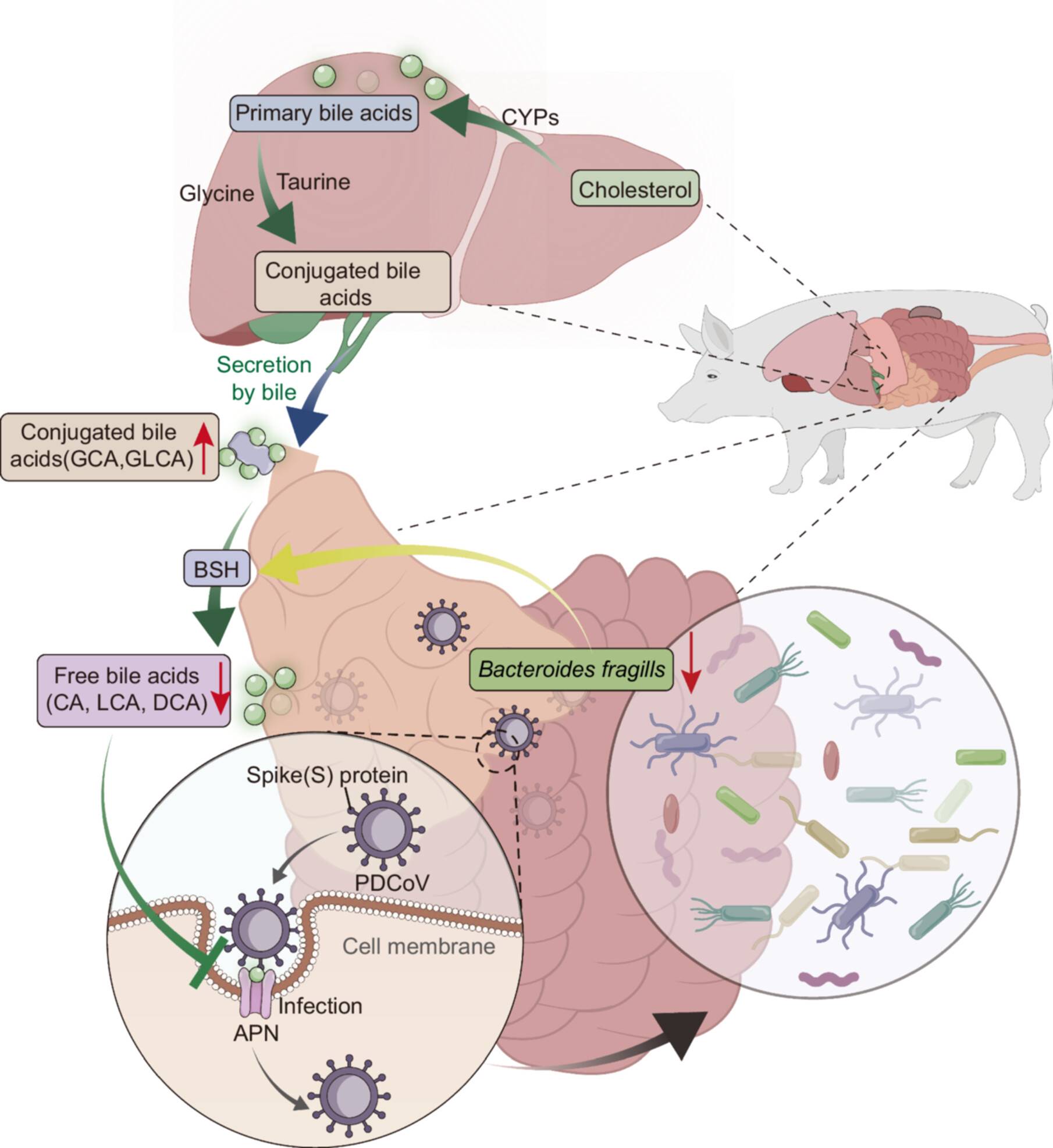
Porcine deltacoronavirus (PDCoV) is a significant pathogen of swine with a global distribution, leading to severe gastrointestinal disease and substantial economic losses. Furthermore, PDCoV poses a potential threat to human health, as evidenced by the recent identification of three cases of infection in Haitian children. This study aimed to investigate the effects of PDCoV infection on host intestinal microbiota and bile acid metabolism, as well as the antiviral effects of lithocholic acid (LCA) in vitro and in vivo. Our results revealed that PDCoV infection caused microbiota dysbiosis in piglets, significantly reducing the intestinal abundance of Bacteroides fragilis (B. fragilis), a reduction that correlated with disruptions in bile acid metabolism. Colonization with bile salt hydrolase (BSH)-producing B. fragilis increased the levels of unconjugated bile acids and inhibited PDCoV infection, highlighting the role of microbiota-associated bile acid metabolism in viral pathogenesis. LCA, a prominent unconjugated bile acid, was shown to effectively inhibit PDCoV infection in porcine small intestinal epithelial cells and porcine intestinal enteroids. Notably, LCA inhibited PDCoV replication independently of bile acid receptor signaling and innate immune modulation. Mechanistic studies indicated that LCA prevents PDCoV infection by disrupting the viral entry process, specifically inhibiting the binding between the PDCoV spike protein and its cellular receptor, aminopeptidase N. In vivo experiments further confirmed that LCA significantly inhibited PDCoV infection in piglets. These results collectively highlight the potential of LCA as a therapeutic agent against PDCoV by targeting and disrupting the viral entry process, providing a novel strategy to control zoonotic PDCoV infections.
SynCom-mediated herbicide degradation activates microbial carbon metabolism in soils
- 03 July 2025

Extensive herbicide residues in the black soil of northeastern China are considered a significant agricultural pollution threat, yet effective bioremediation of this complex and persistent mixture remains a challenge. We identified 16 bacterial species that associated with these herbicide residues in situ, nine of which were culturable and could degrade multiple herbicides. From these strains, we constructed a four-member synthetic microbial community (SynCom) that degrades multiple herbicides, stabilizes colonization, increases soil bacterial biodiversity, and alters soil enzyme activity. Under laboratory conditions, the SynCom degraded eight herbicides within 48 h with >60% efficiency, and accumulated carbon on the cell surface of the constituent species. In black soil microcosm trials, the SynCom achieved 60%−99% degradation efficiency of the endogenous herbicides over 35 days and was able to consistently maintain biomass above 104 cfu/g soil. Additionally, SynCom application resulted in an accumulation of carbohydrate-active enzymes and microbial necromass-associated carbon, which suggests activation of soil microbial carbon metabolism. In support of this, metagenomic analyses identified a significant increase in the abundance of genes involved in the tricarboxylic acid cycle, pyruvate metabolism, and glycolysis. This SynCom represents a compelling bioremediation solution that simultaneously improves soil microbial carbon metabolism activity in polluted soils.
EasyMetagenome: A user-friendly and flexible pipeline for shotgun metagenomic analysis in microbiome research
- 14 February 2025
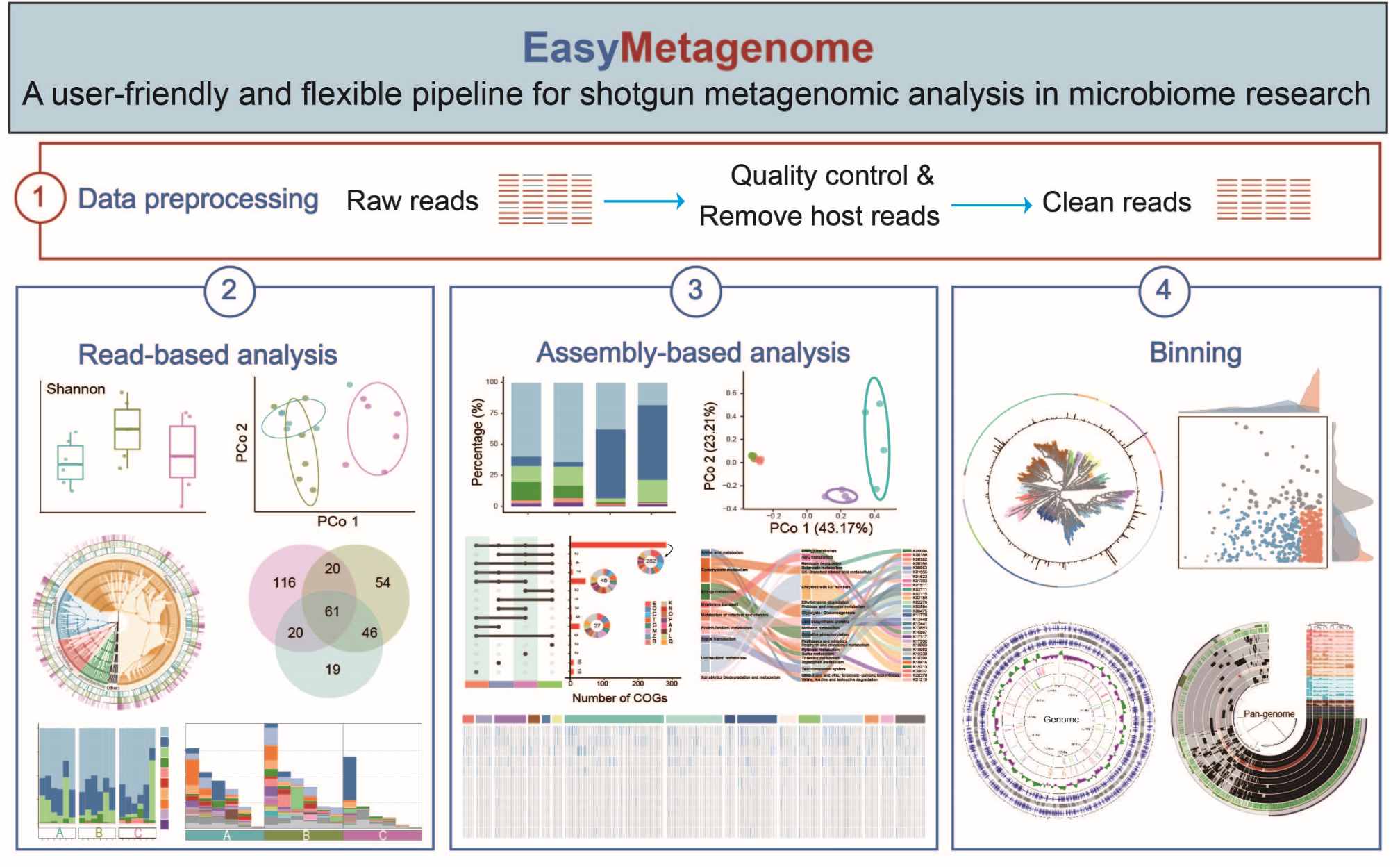
EasyMetagenome is a user-friendly shotgun metagenomics pipeline designed for comprehensive microbiome analysis, supporting quality control, host removal, read-based, assembly-based, binning, genome and pan-genome analysis. It offers customizable settings, data visualizations, and parameter explanations. The pipeline is freely available at https://github.com/YongxinLiu/EasyMetagenome.
Gut–X axis
- 26 February 2025
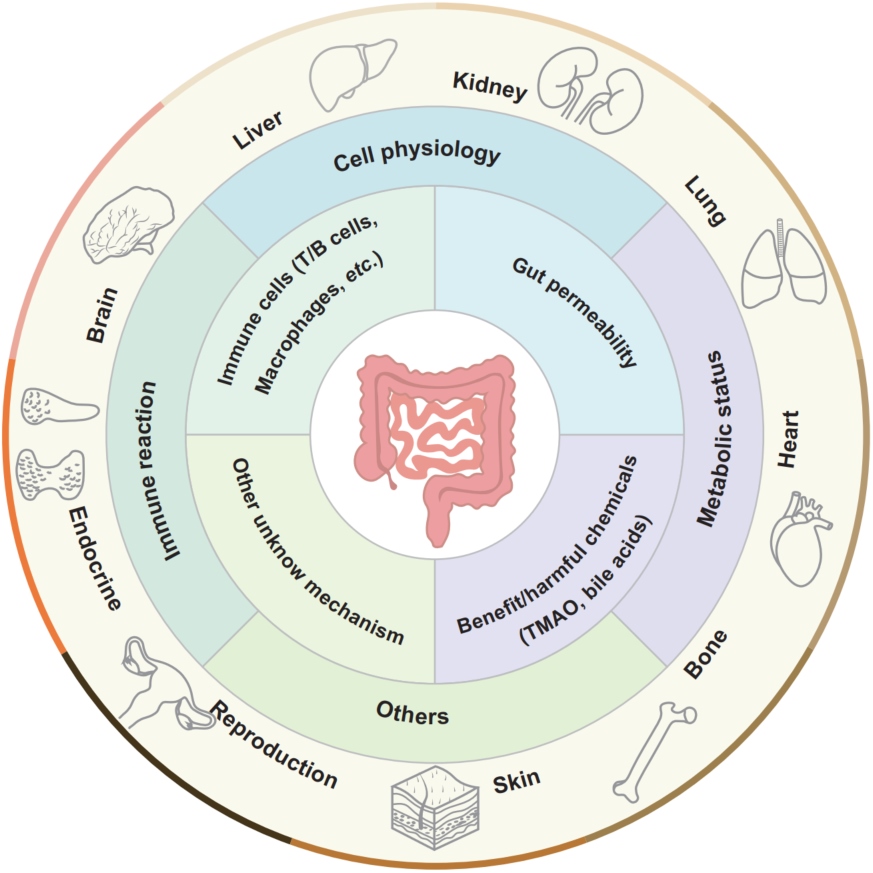
The concept of “gut–X axis”: the intestine and intestinal microbiota are proven to be able to modulate the pathophysiologic progressions of the extraintestinal organs' diseases. The bioactive chemicals and/or intestinal immune cells can translocate into the circulatory system and other organs and influence the immune reactions, metabolic status, cells physiology, and so forth of extraintestinal organs, finally regulating these organs' homeostasis. Meanwhile, other organs may reversely impact the intestine, namely such regulatory axis is bidirectional.
Ultrafast one-pass FASTQ data preprocessing, quality control, and deduplication using fastp
- 08 May 2023
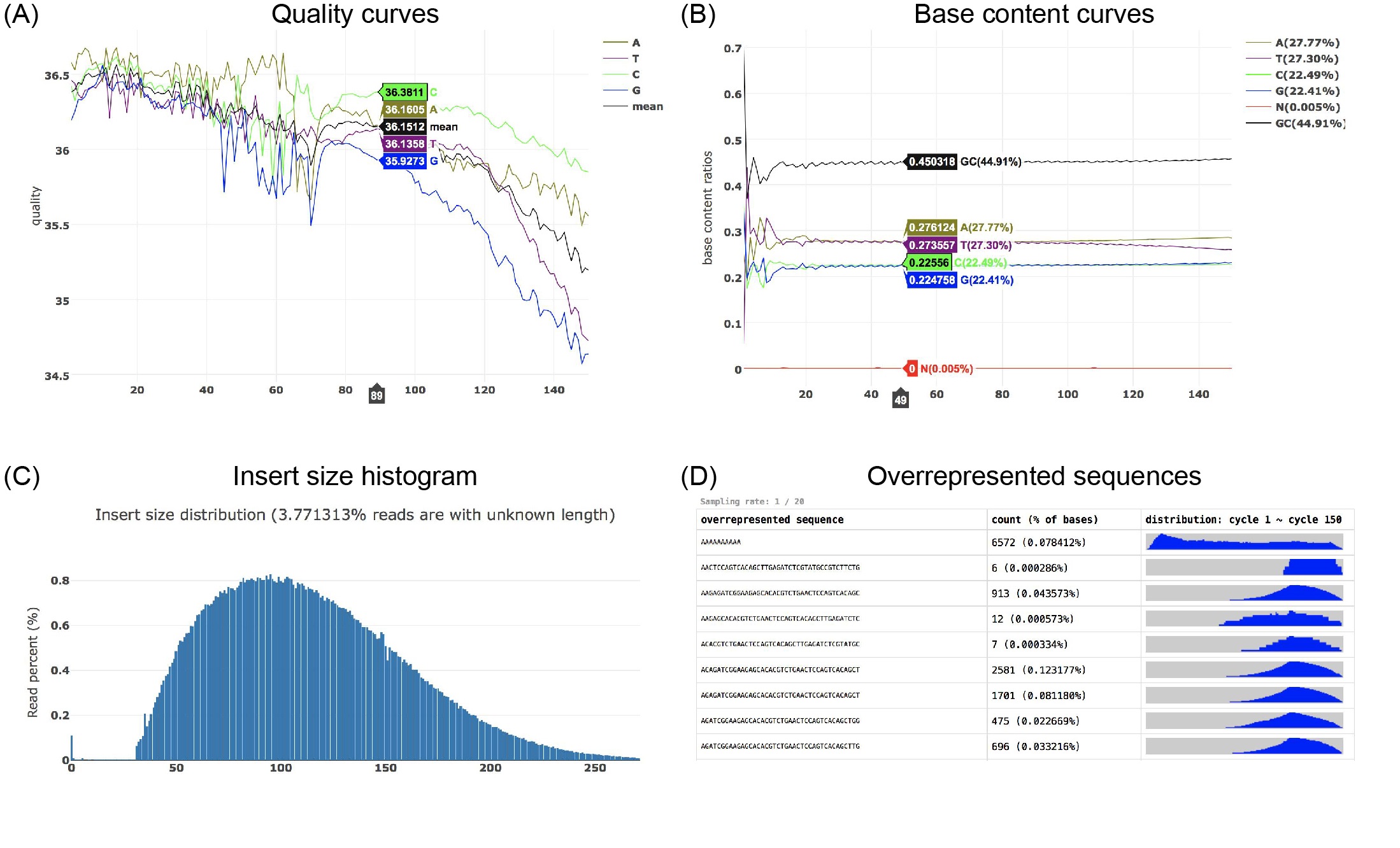
Fastp is a widely adopted tool for FASTQ data preprocessing and quality control. It is ultrafast and versatile and can perform adapter removal, global or quality trimming, read filtering, unique molecular identifier processing, base correction, and many other actions within a single pass of data scanning. Fastp has been reconstructed and upgraded with some new features. Compared to fastp 0.20.0, the new fastp 0.23.2 is even 80% faster.
ImageGP: An easy‐to‐use data visualization web server for scientific researchers
- 21 February 2022
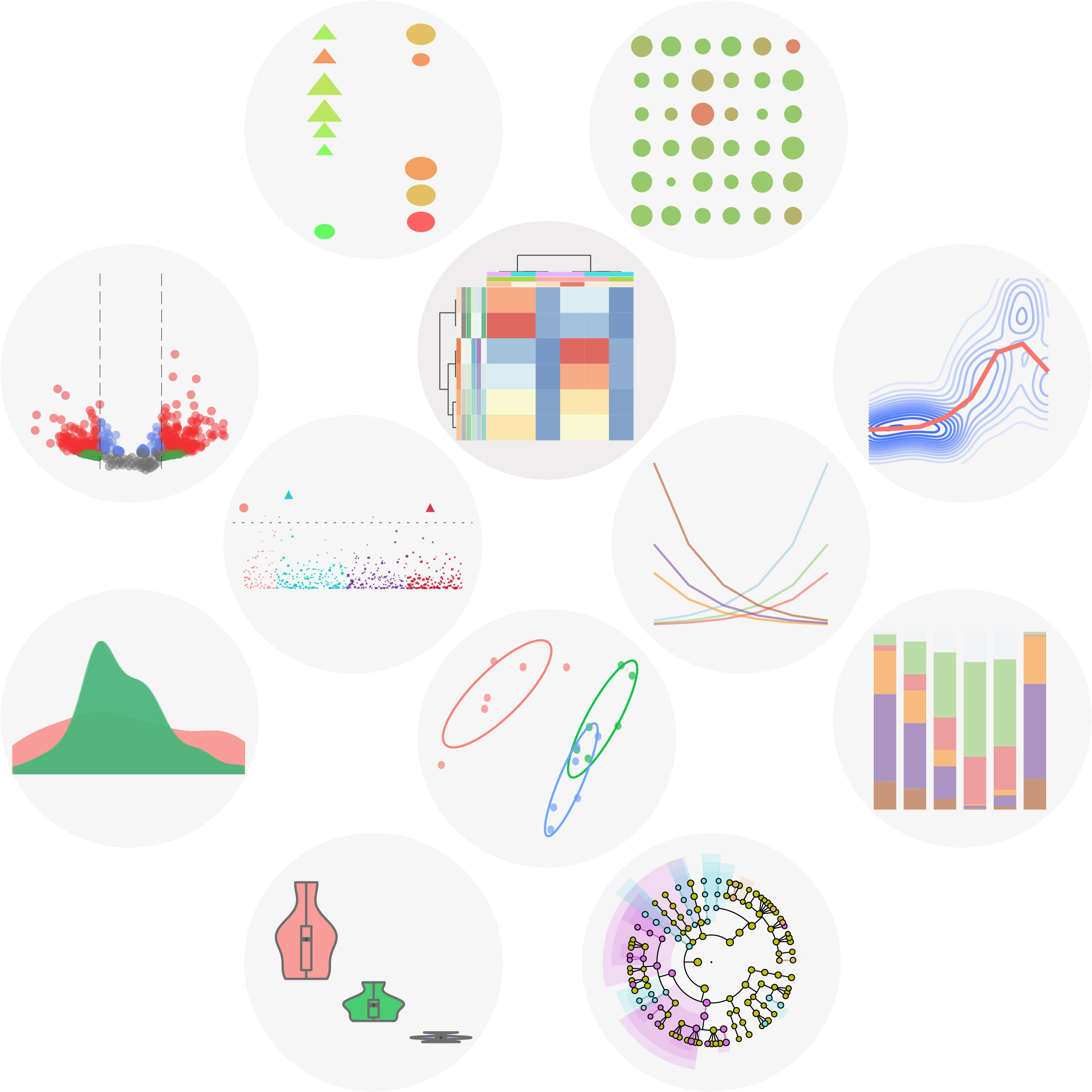
Representative visualization results of ImageGP. ImageGP supports 16 types of images and four types of online analysis with up to 26 parameters for customization. ImageGP also contains specialized plots like volcano plot, functional enrichment plot for most omics-data analysis, and other 4 specialized functions for microbiome analysis. Since 2017, ImageGP has been running for nearly 5 years and serving 336,951 visits from all over the world. Together, ImageGP (http://www.ehbio.com/ImageGP/) is an effective and efficient tool for experimental researchers to comprehensively visualize and interpret data generated from wet-lab and dry-lab.
Ggtree: A serialized data object for visualization of a phylogenetic tree and annotation data
- 28 September 2022
Using PhyloSuite for molecular phylogeny and tree-based analyses
- 16 February 2023
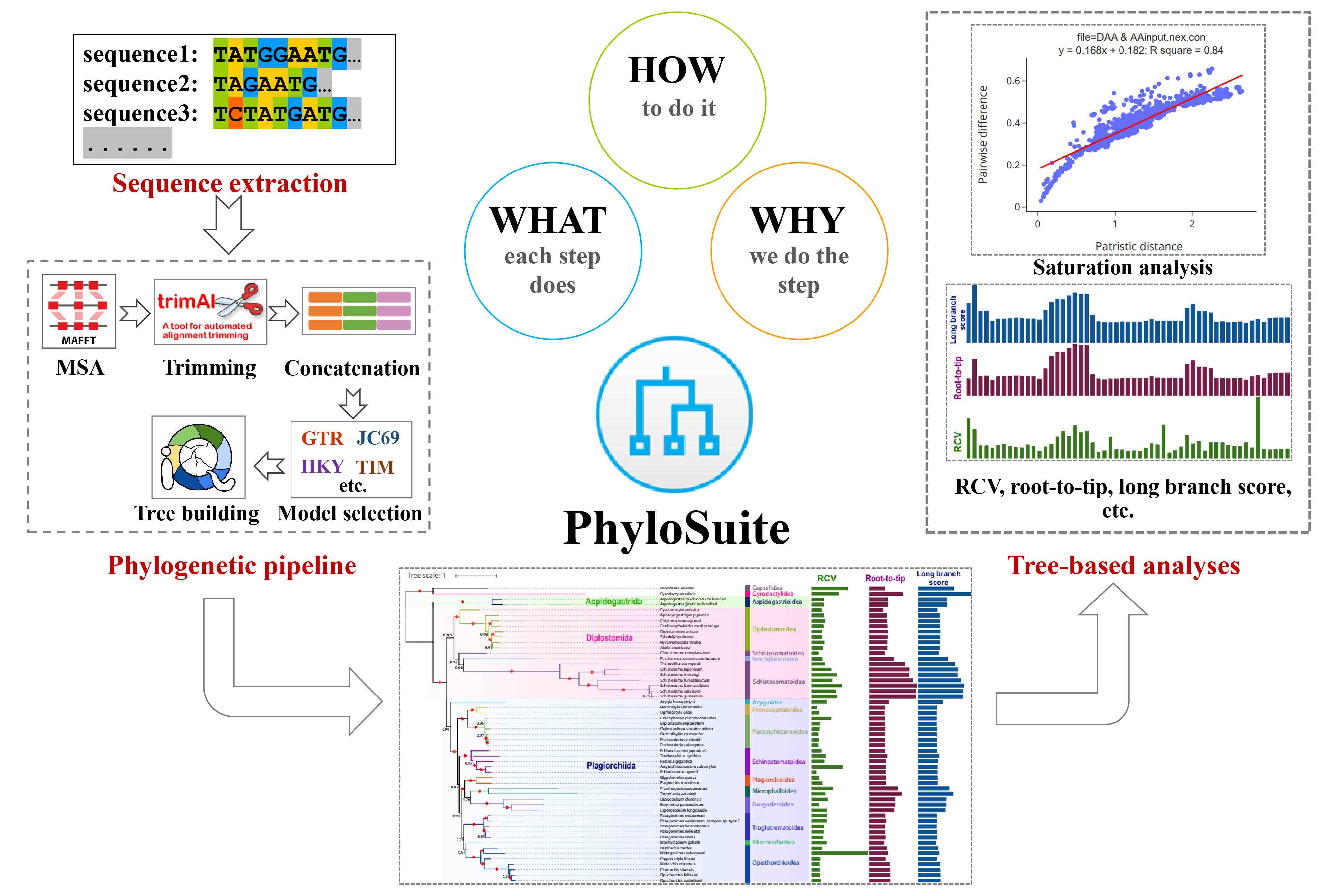
A new release of PhyloSuite, capable of conducting tree-based analyses. Detailed guidelines for each step of phylogenetic and tree-based analyses, following the “What? Why? and How?” structure. This protocol will help beginners learn how to conduct multilocus phylogenetic analyses and help experienced scientists improve their efficiency.

